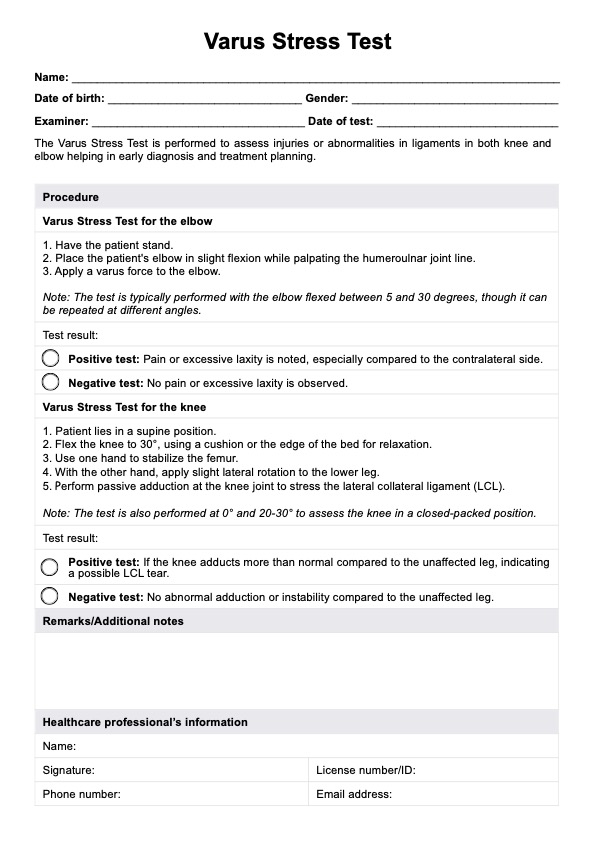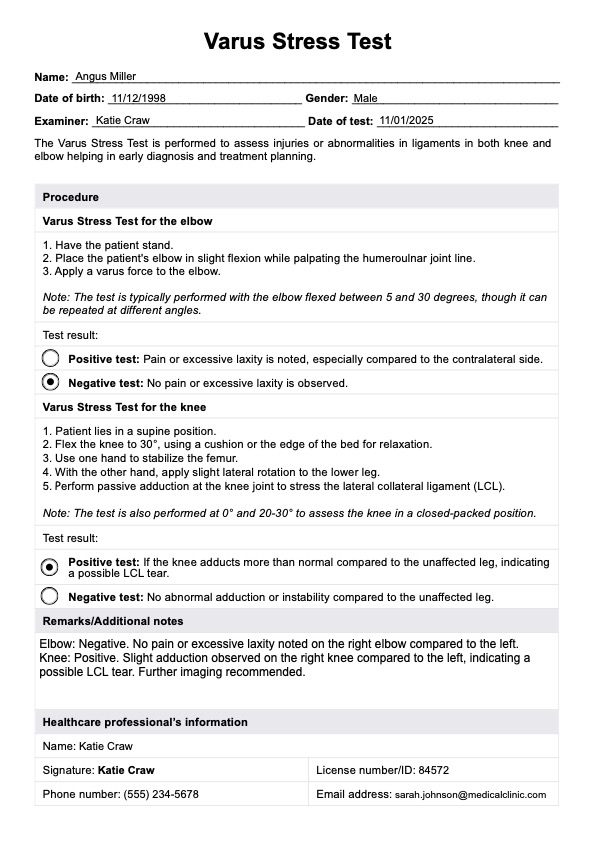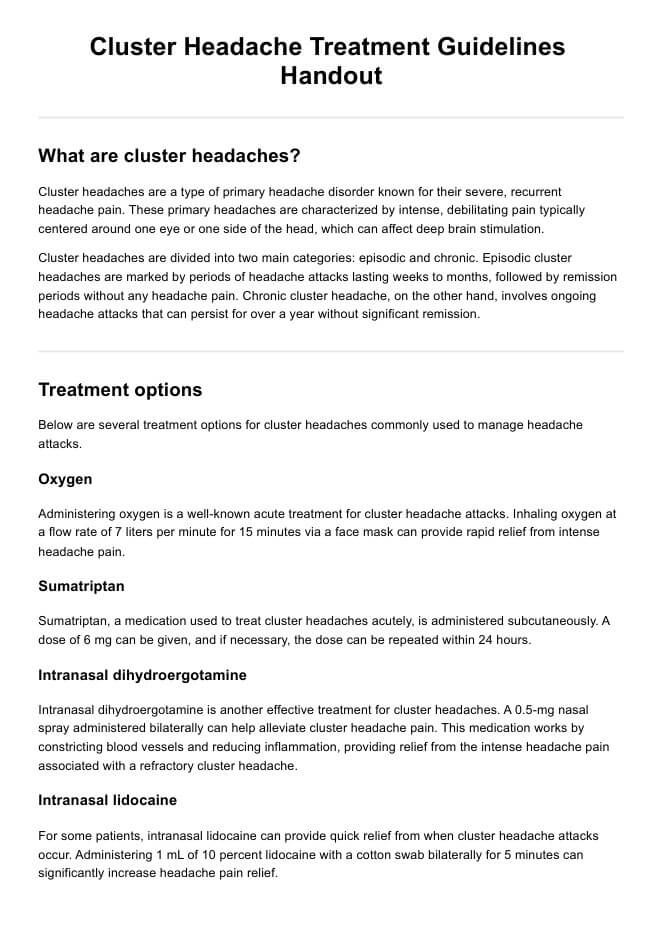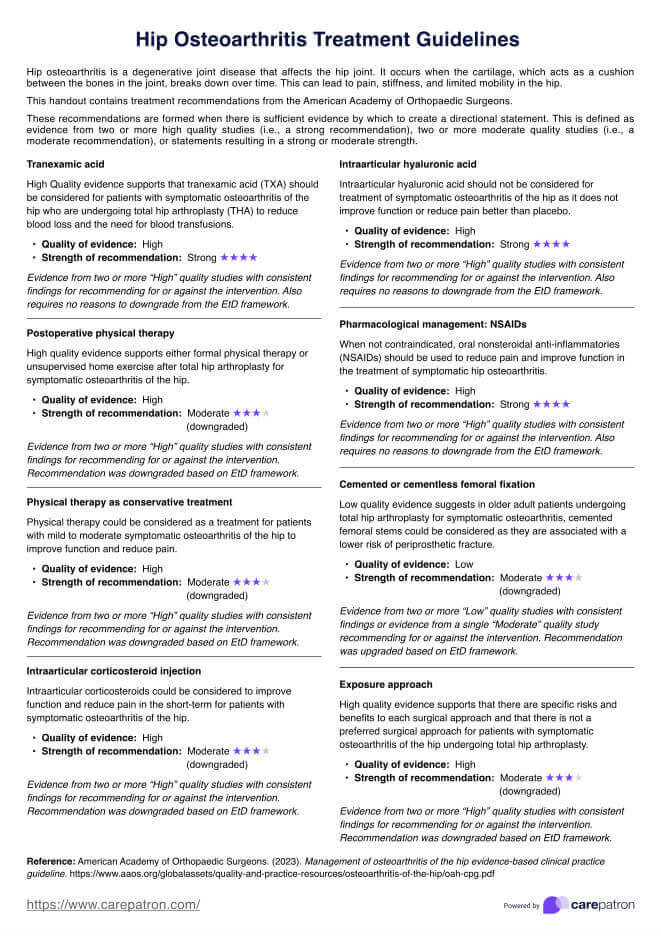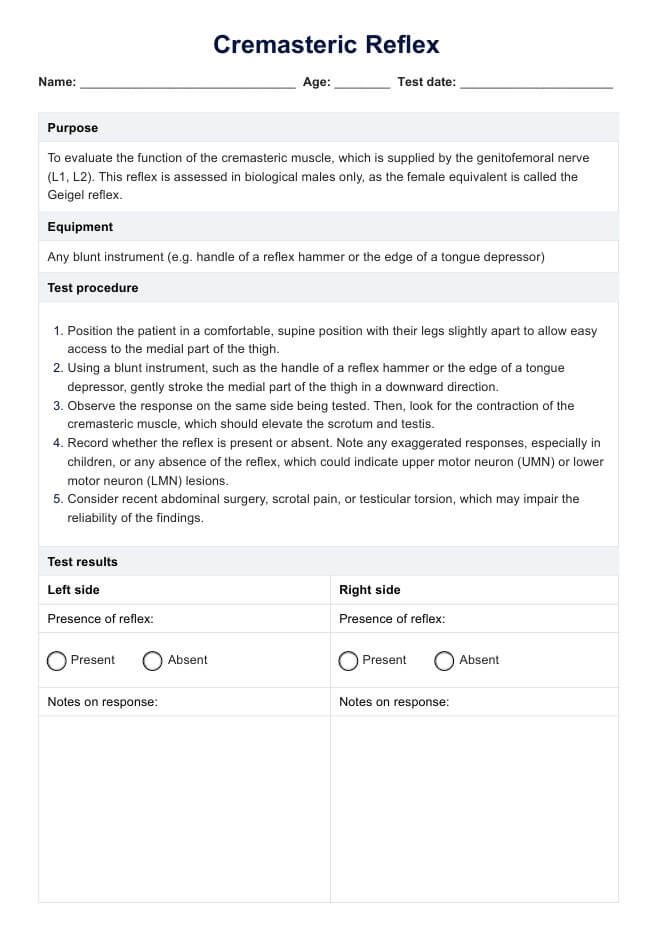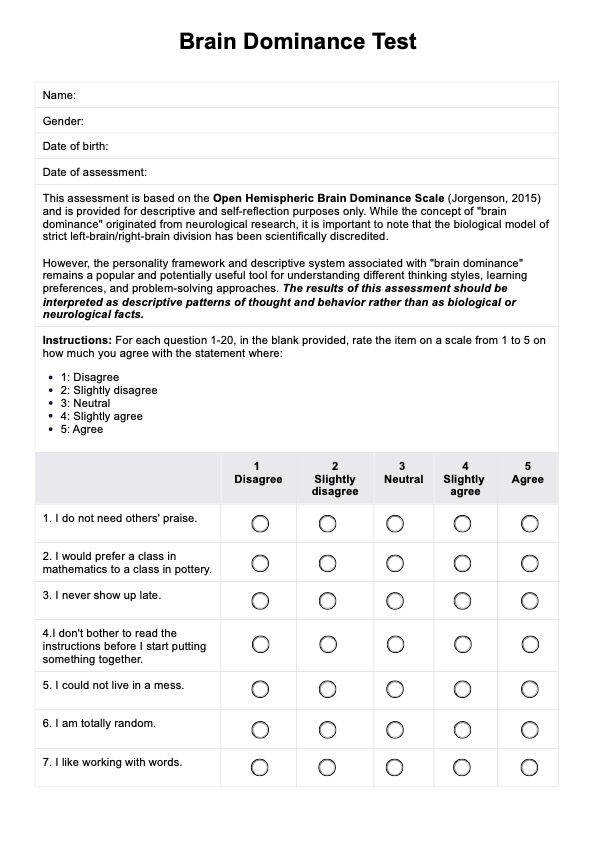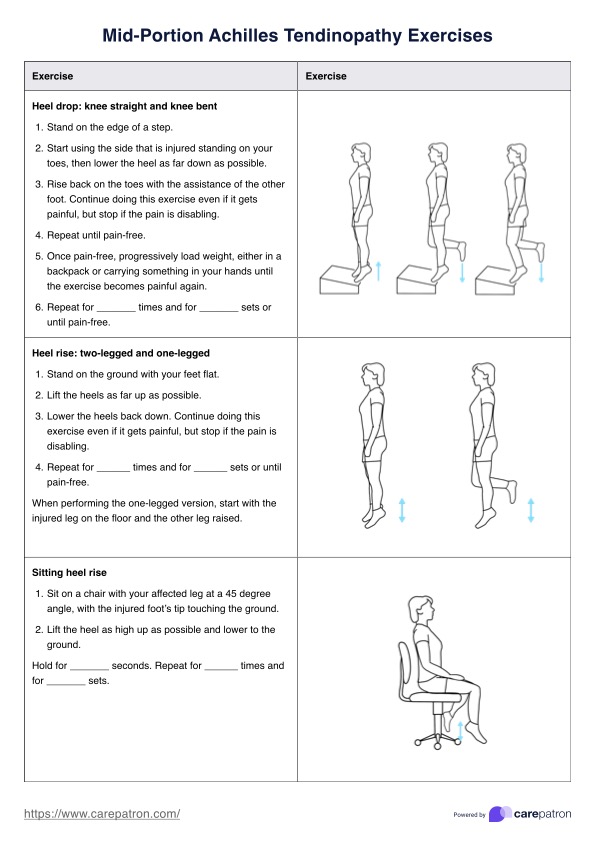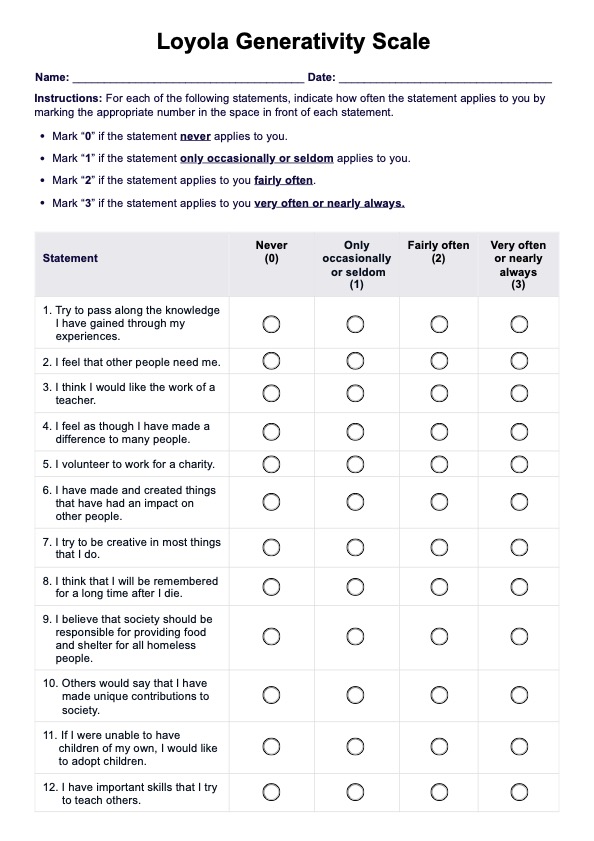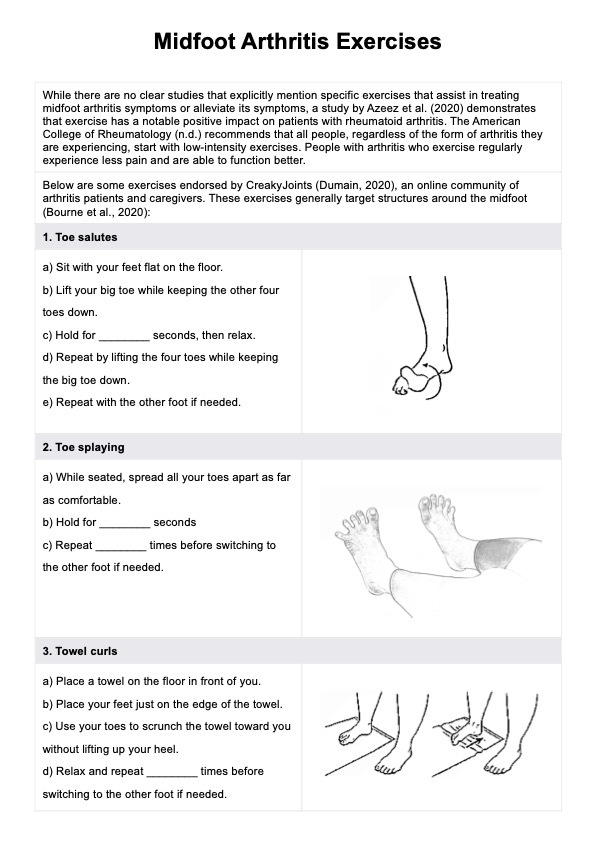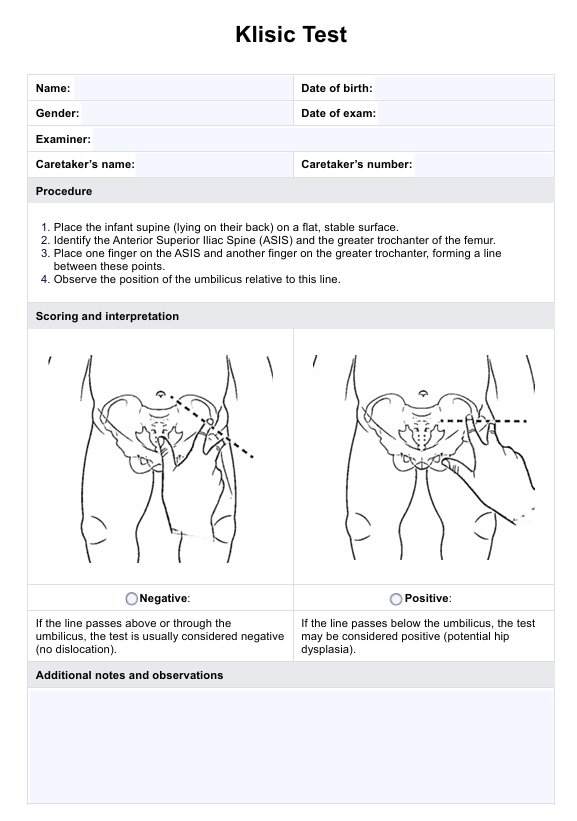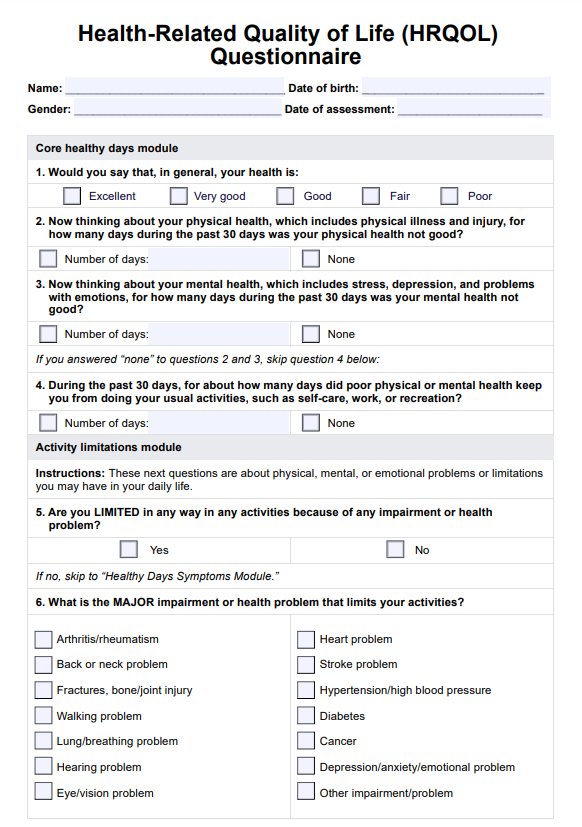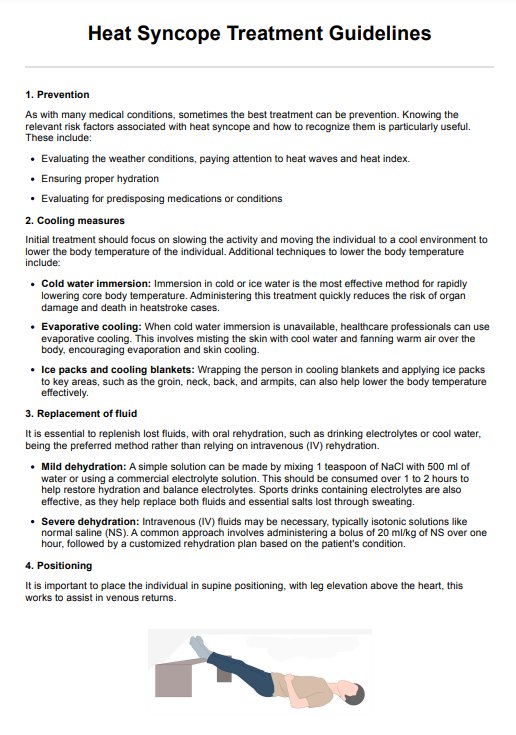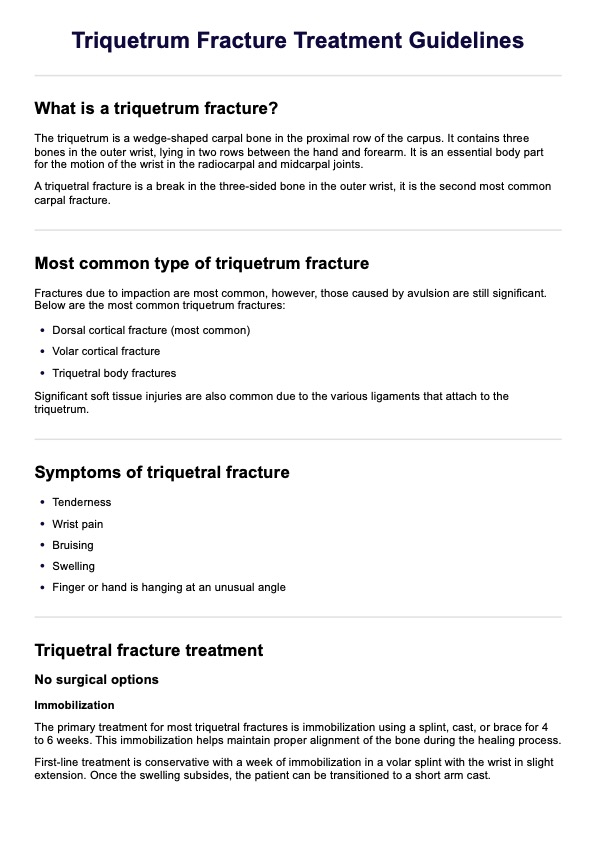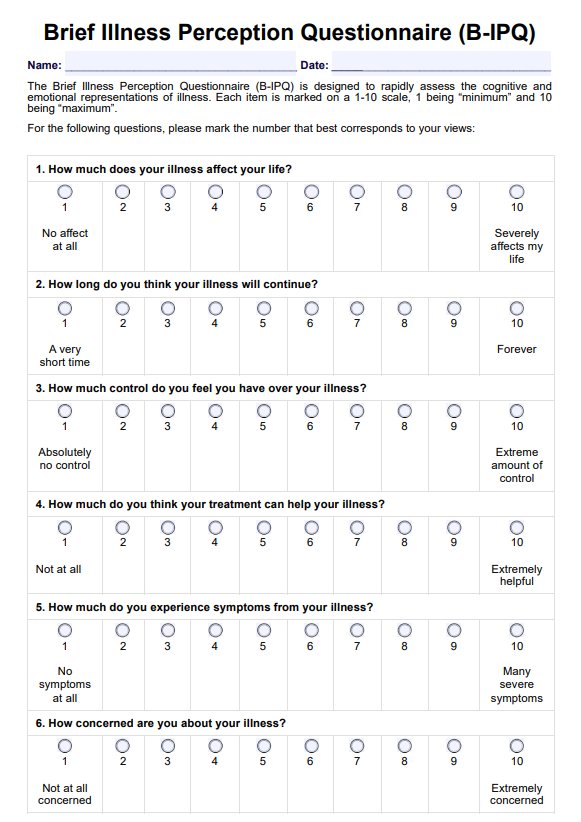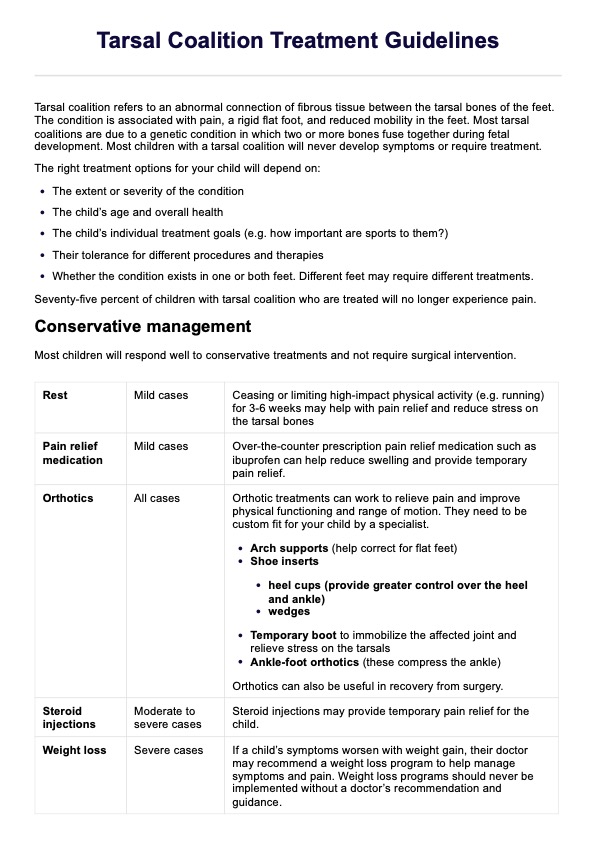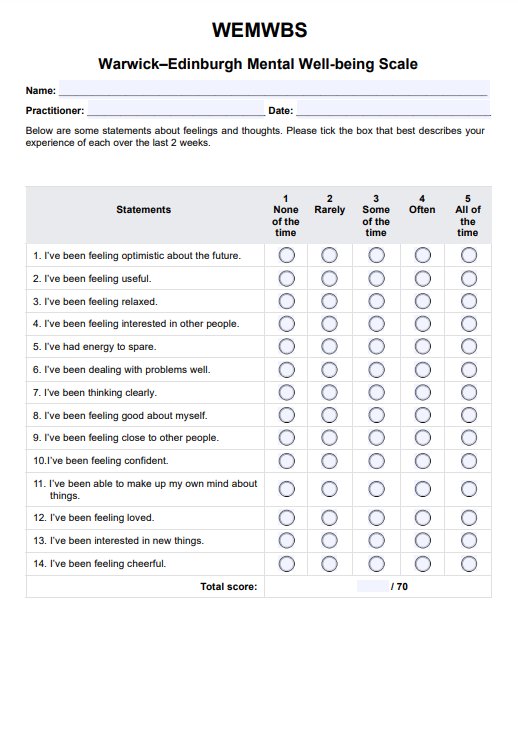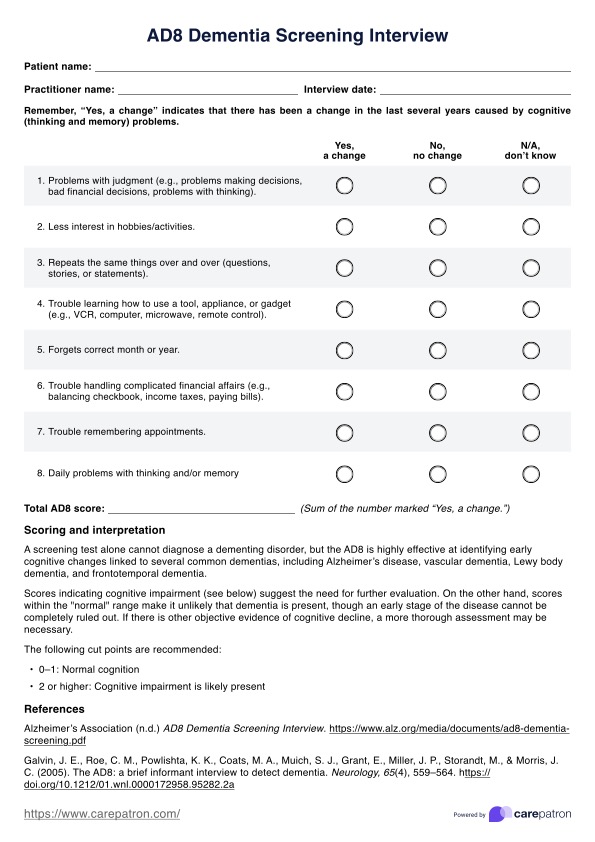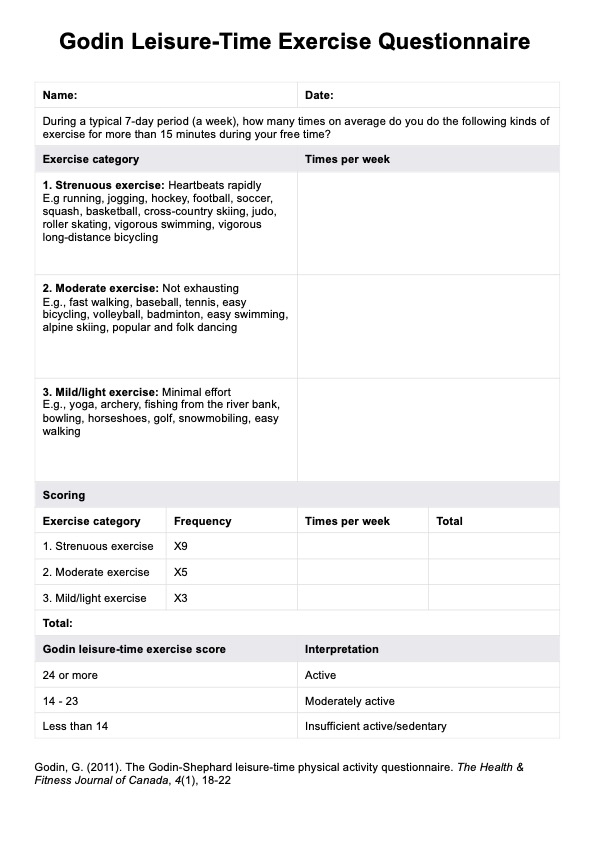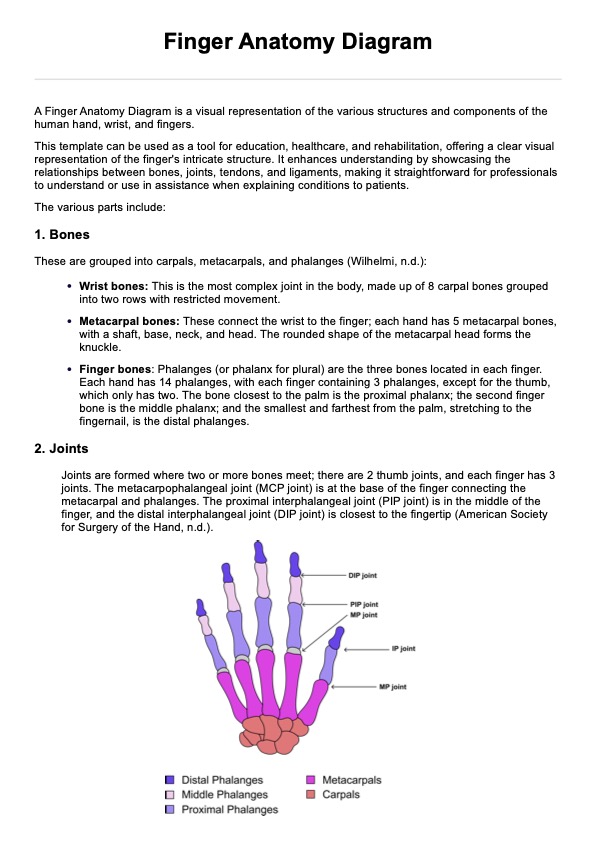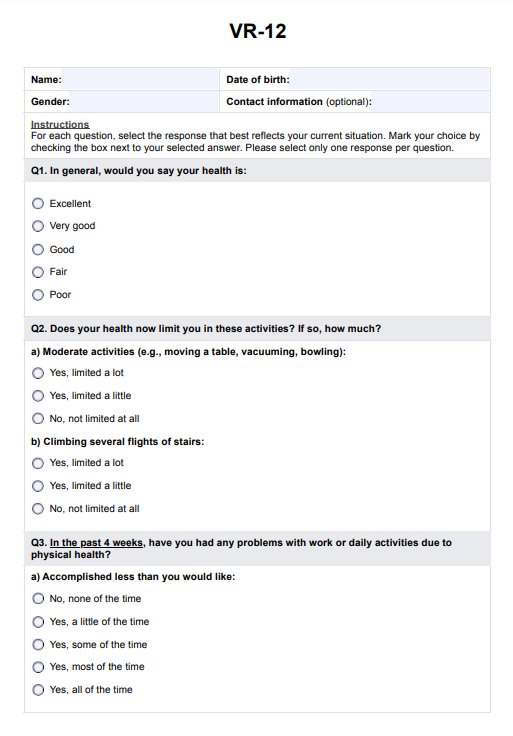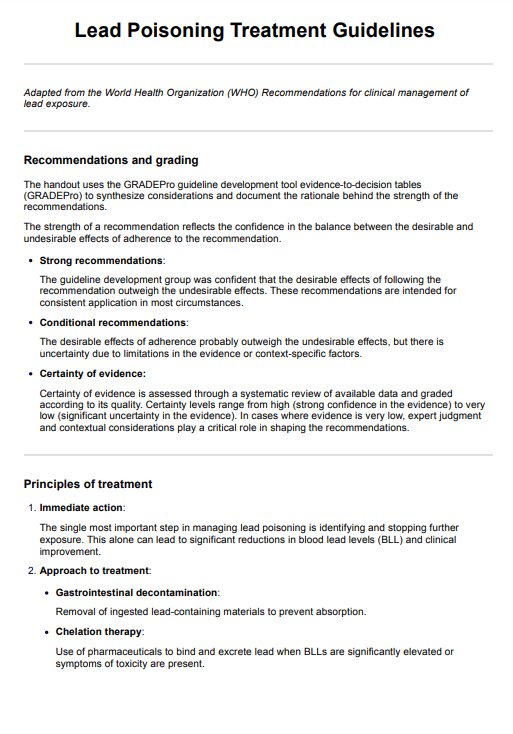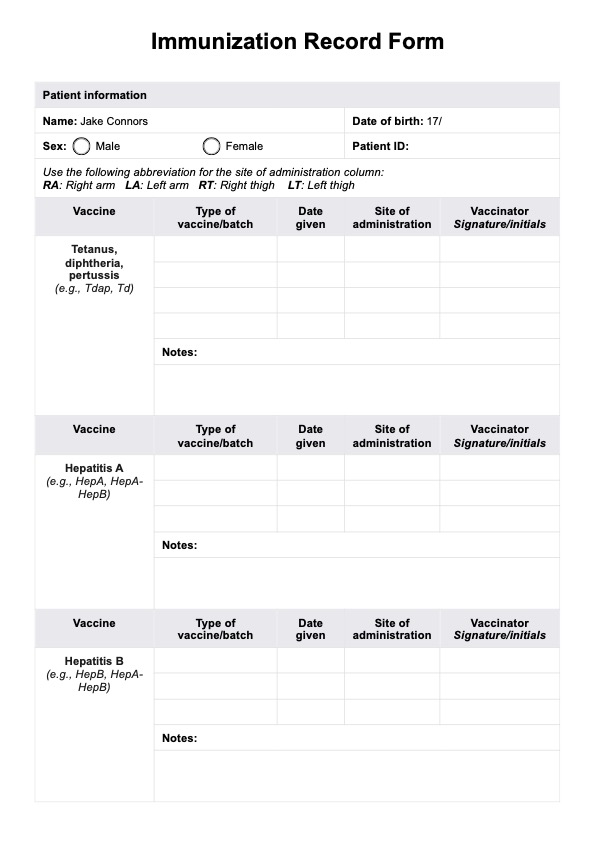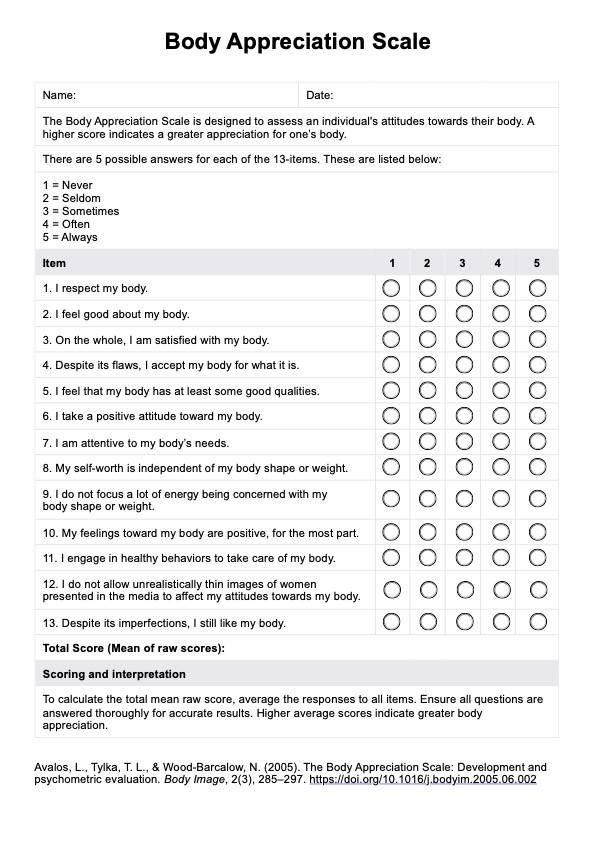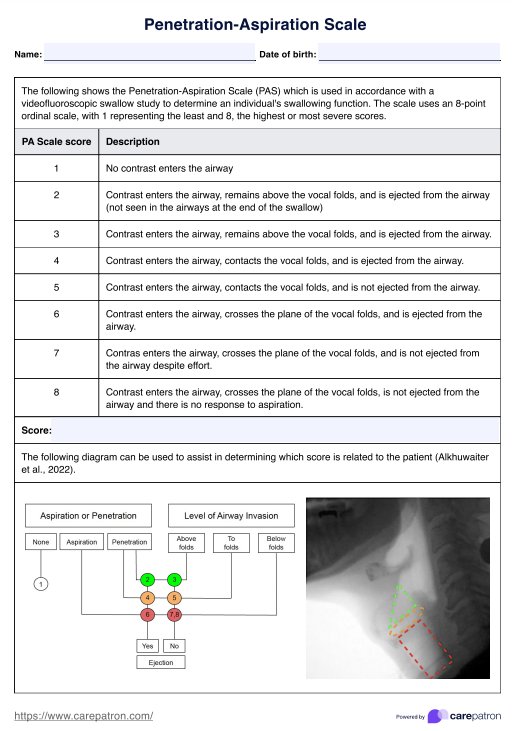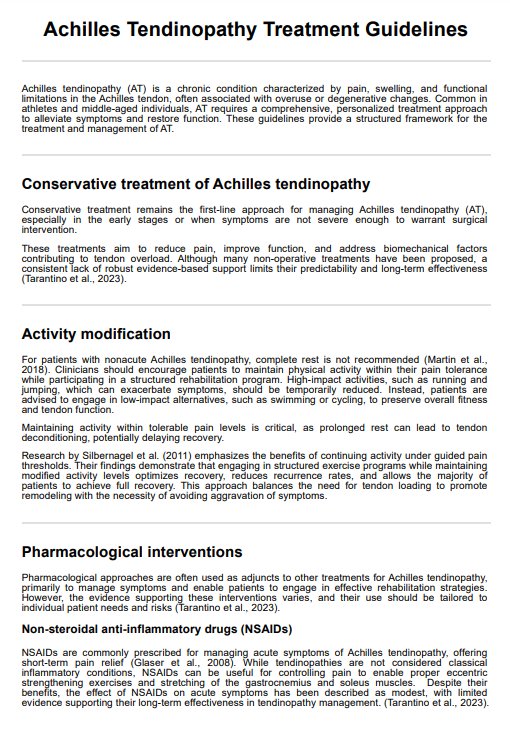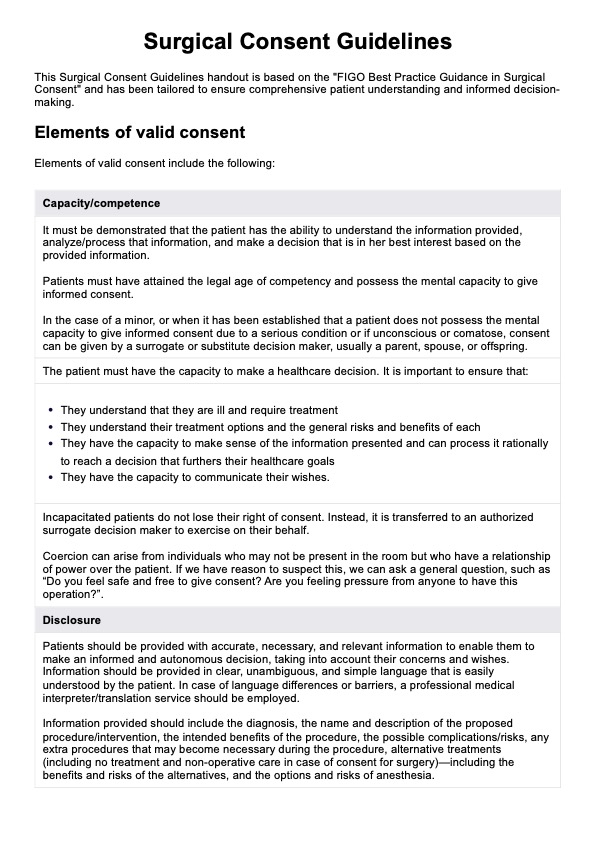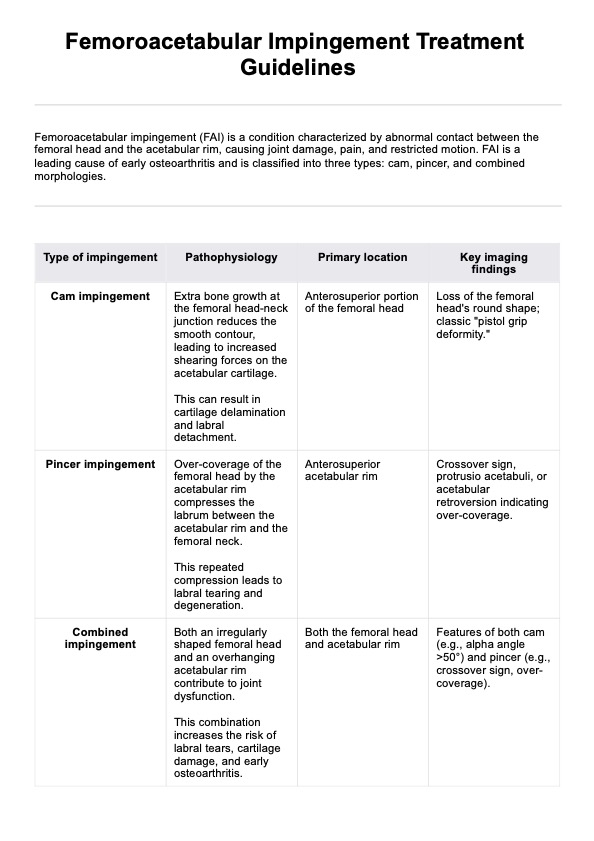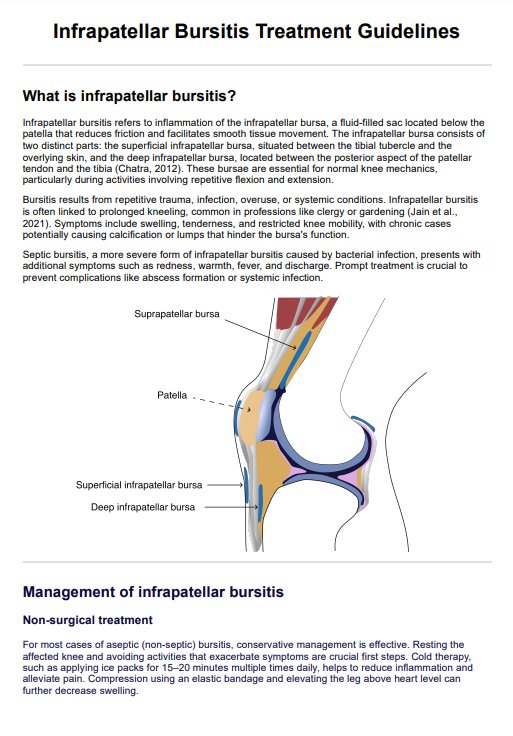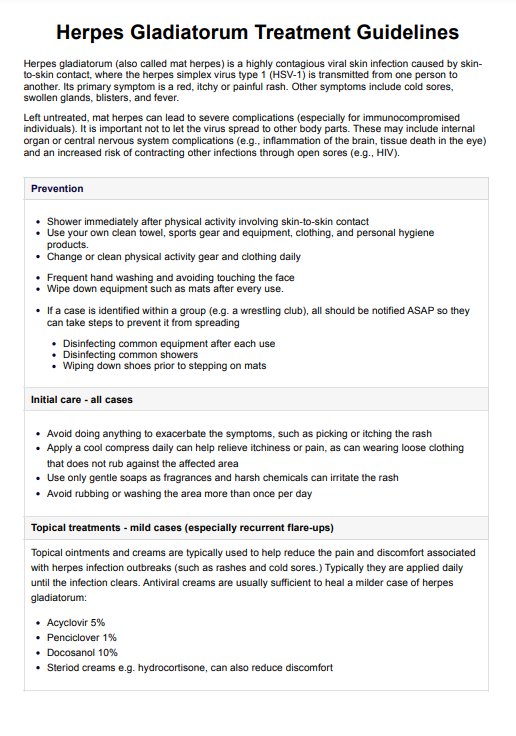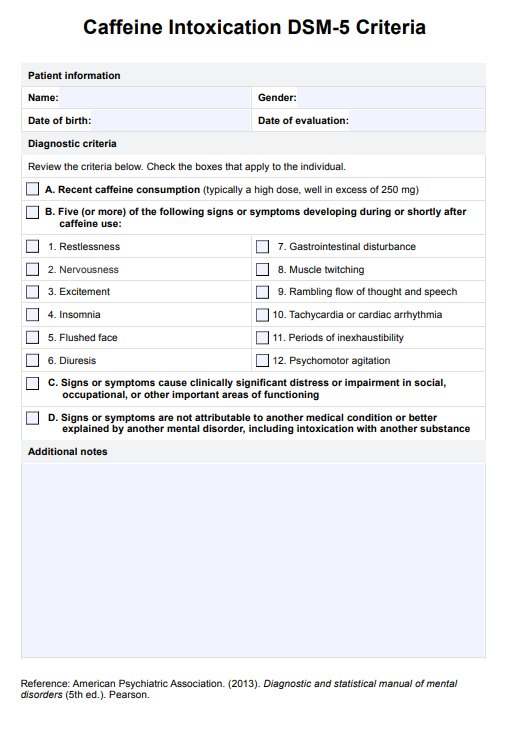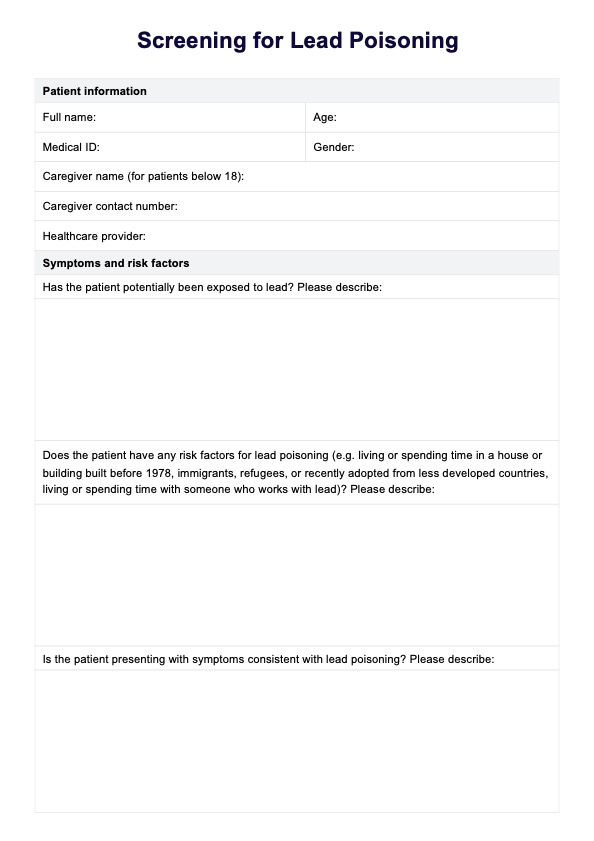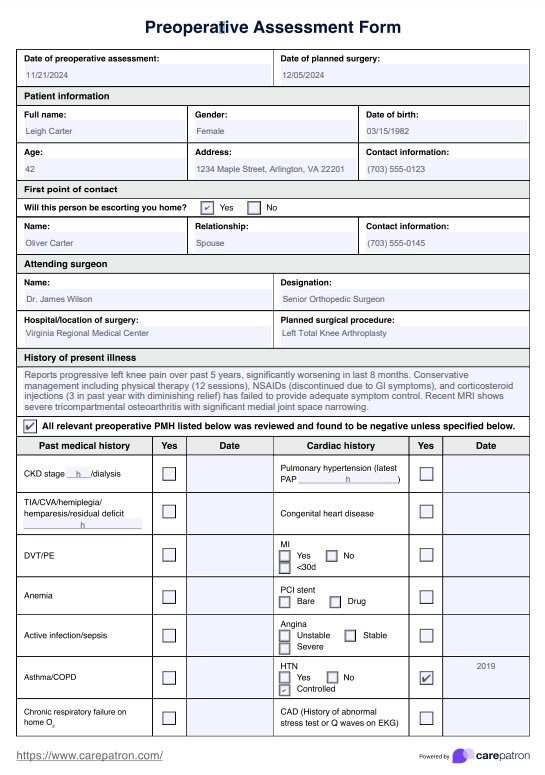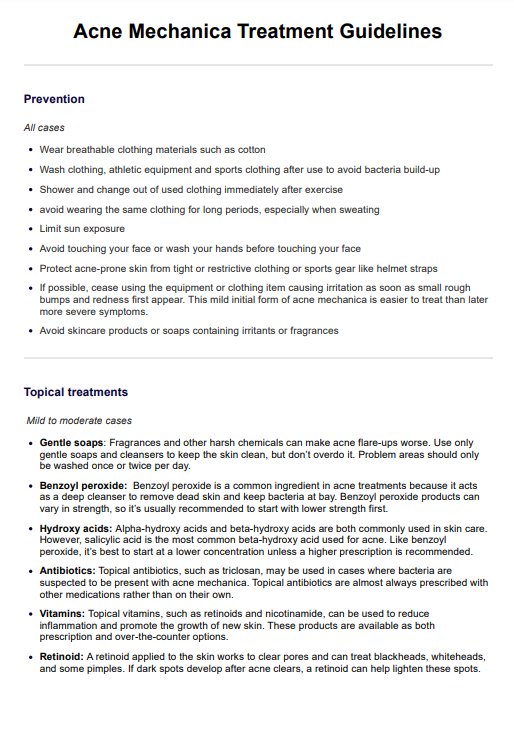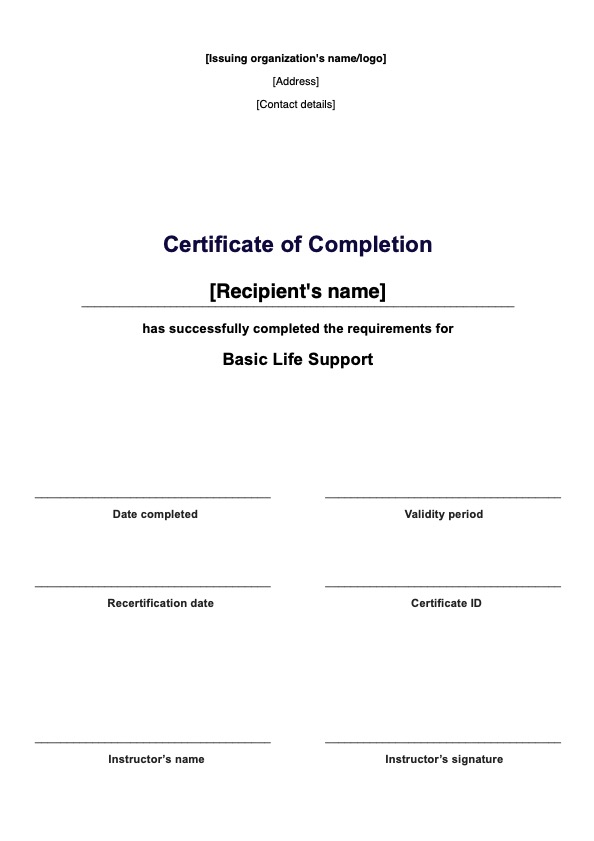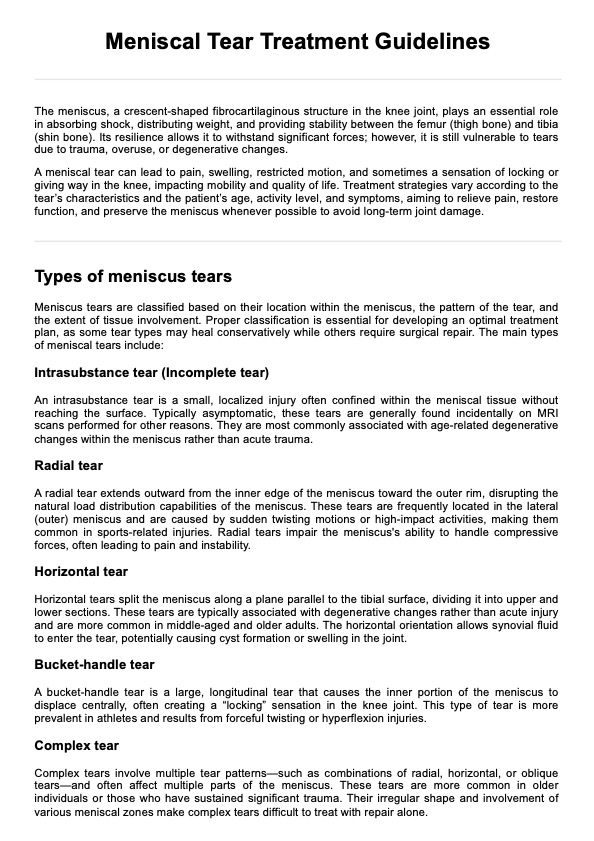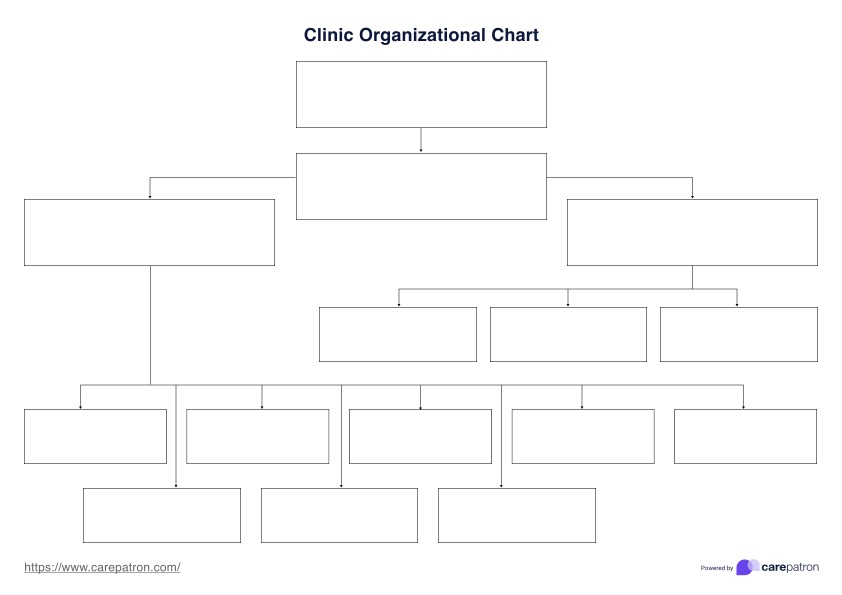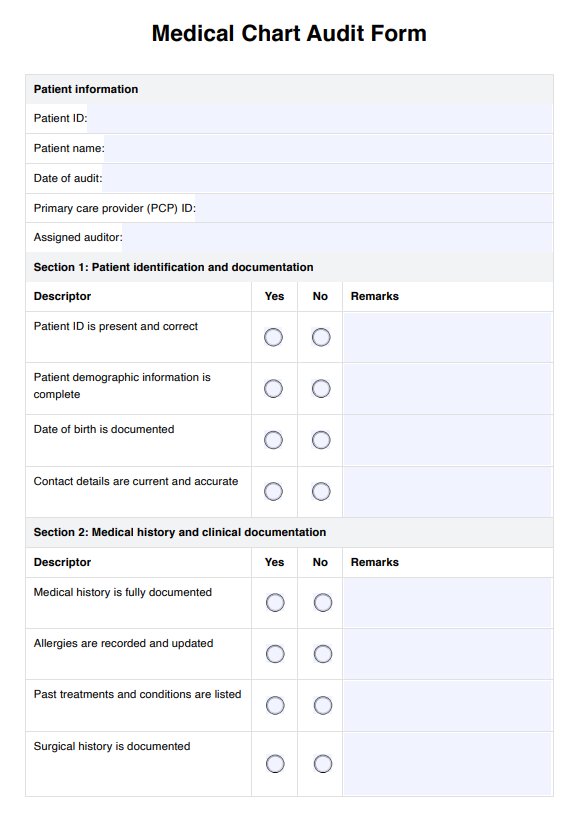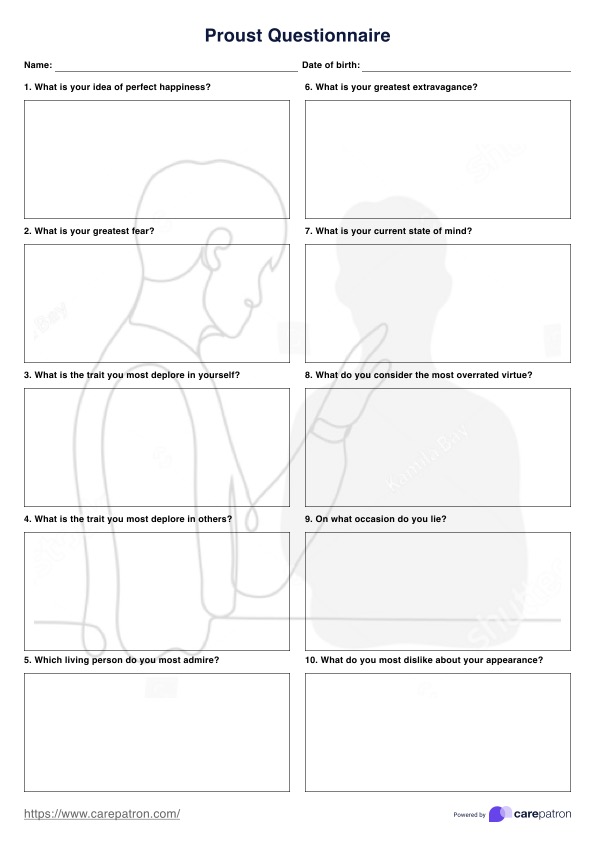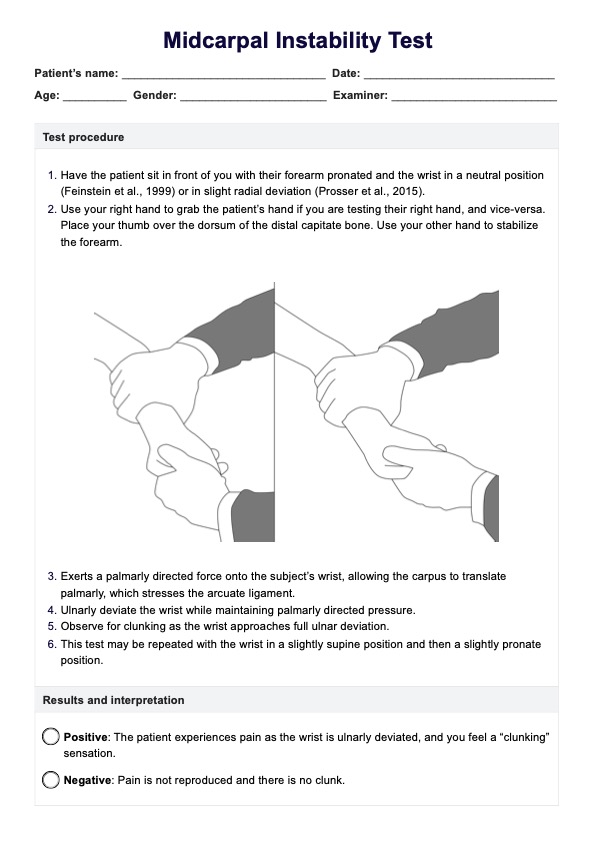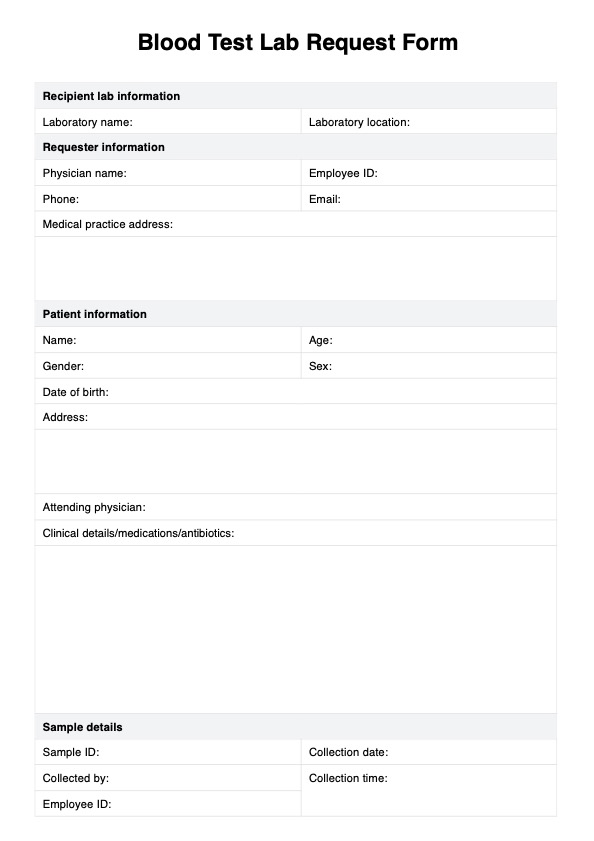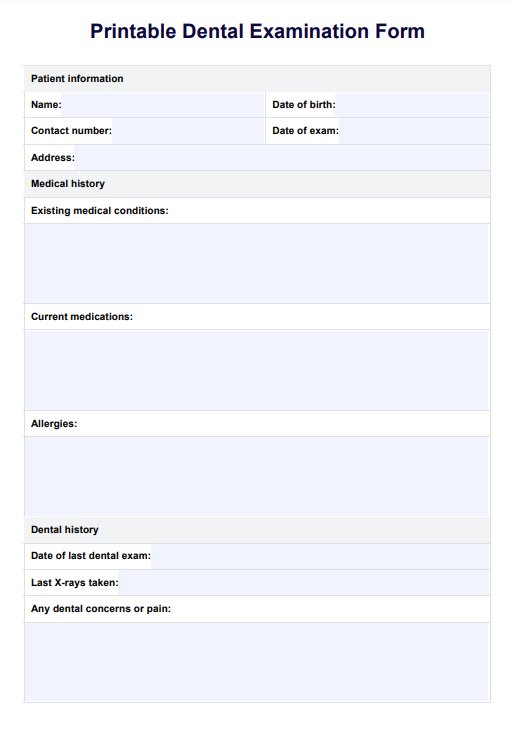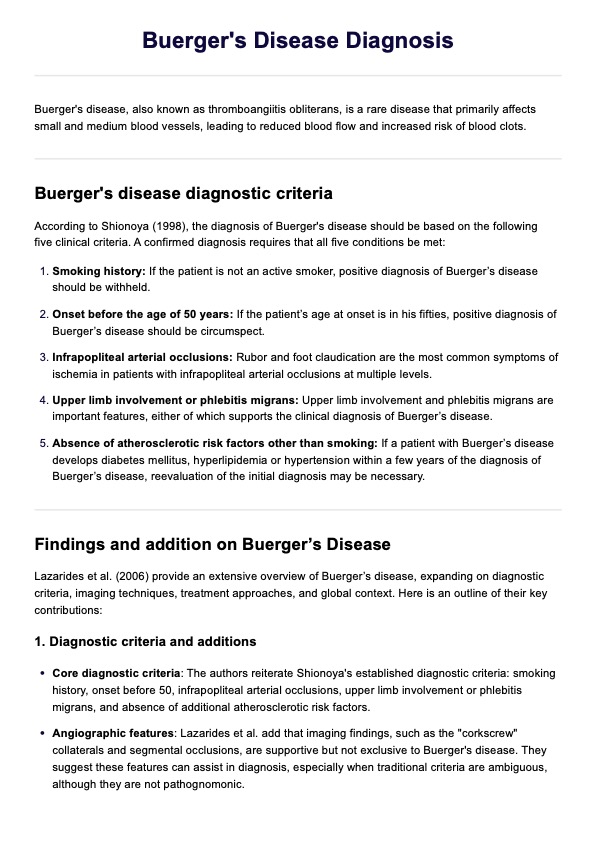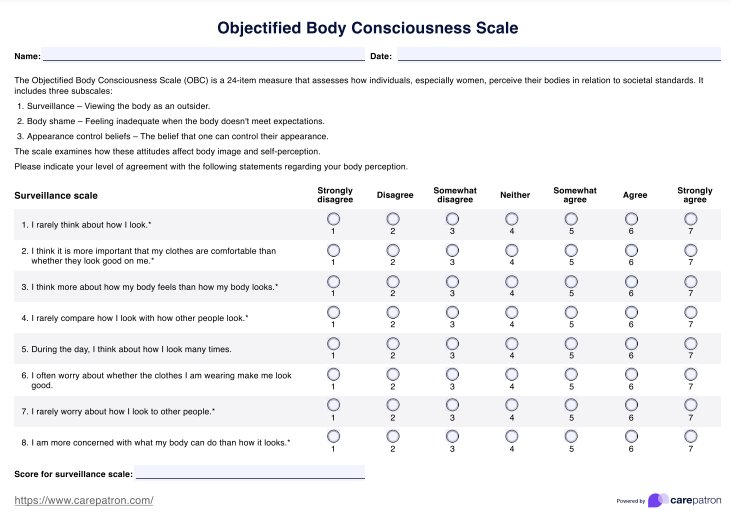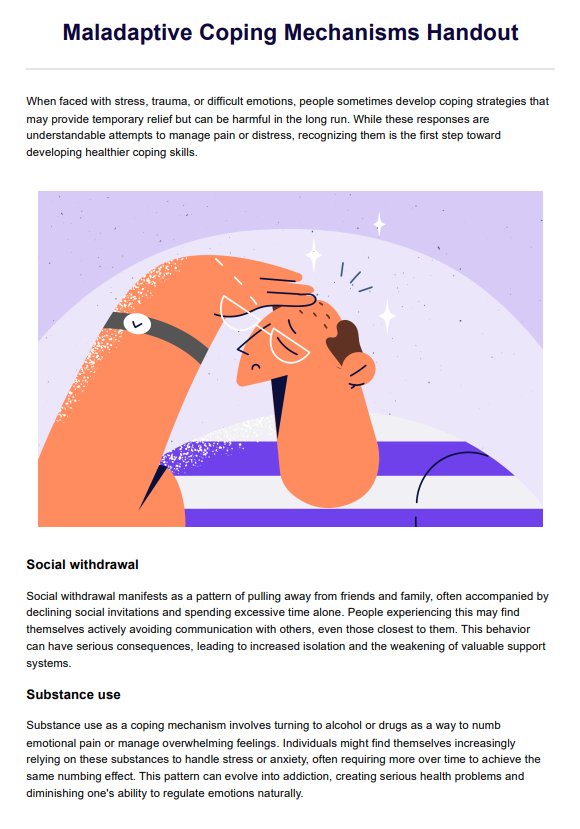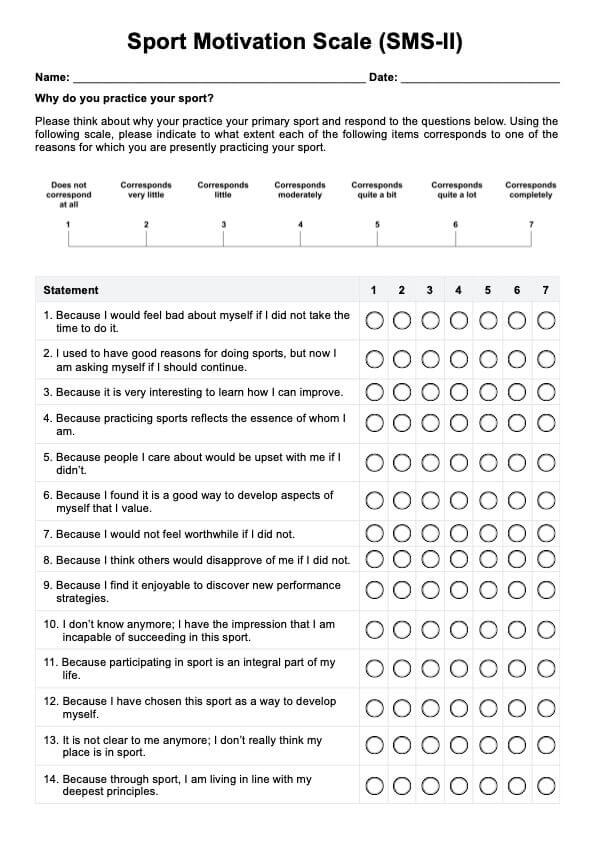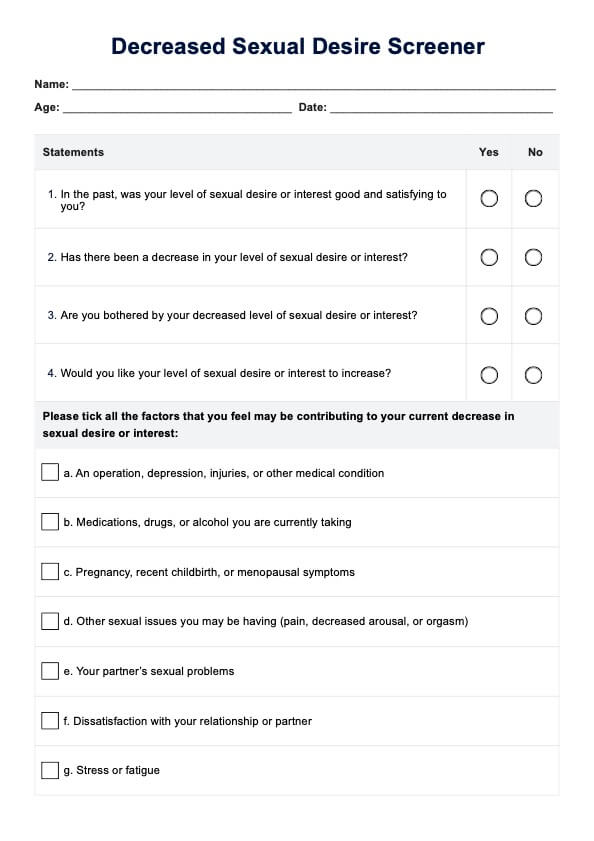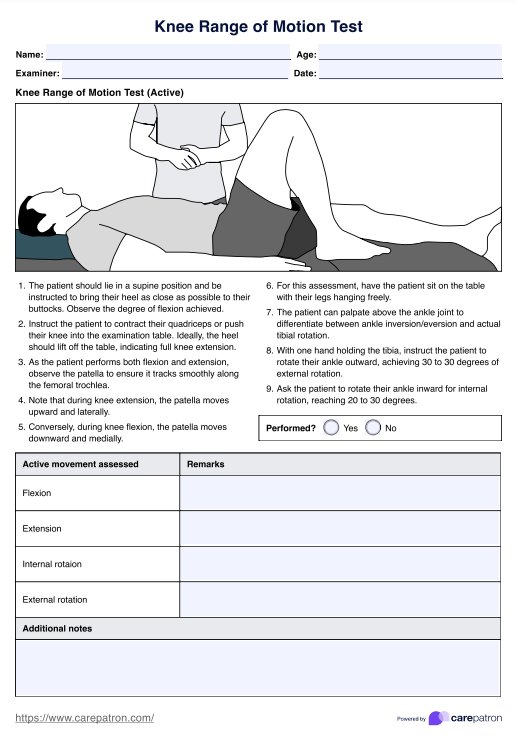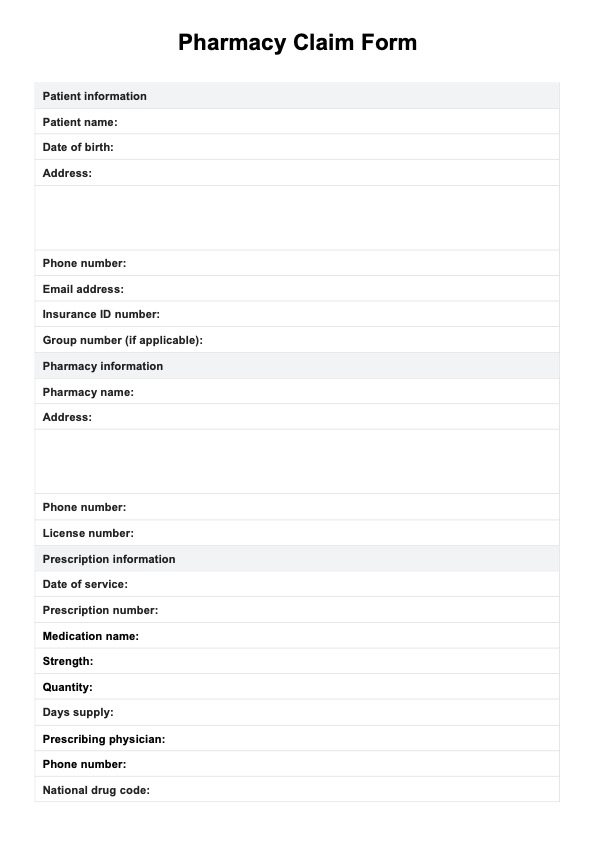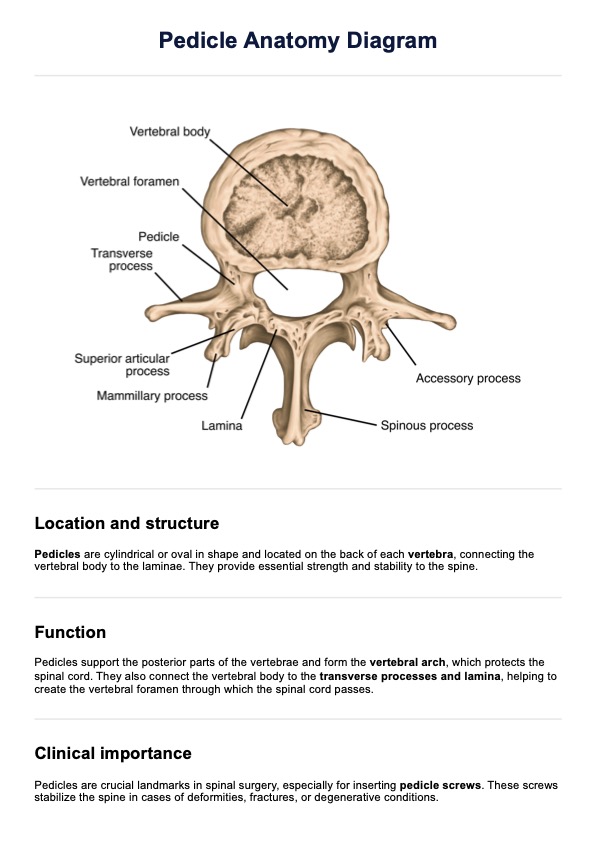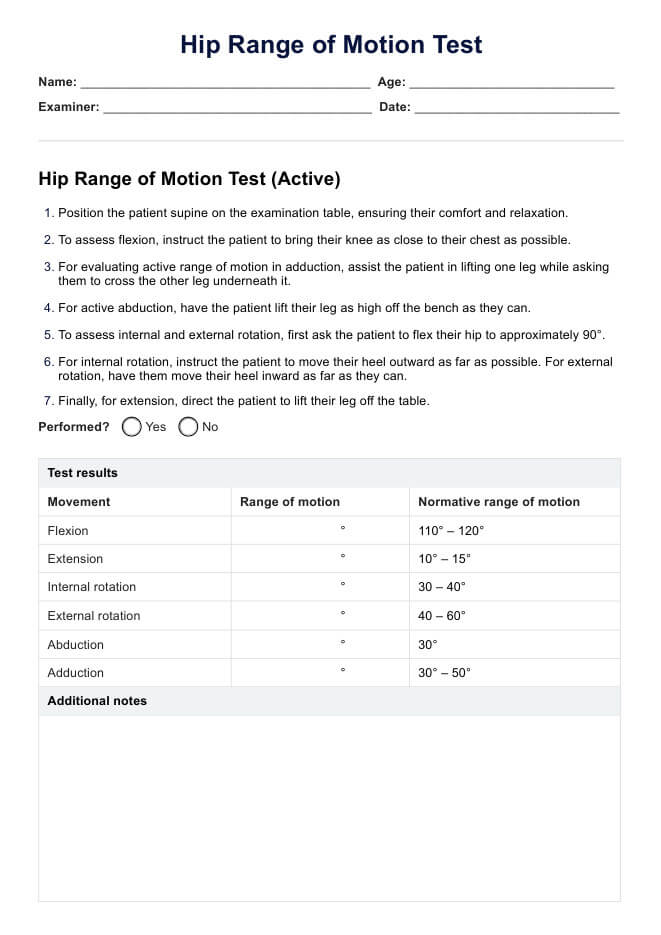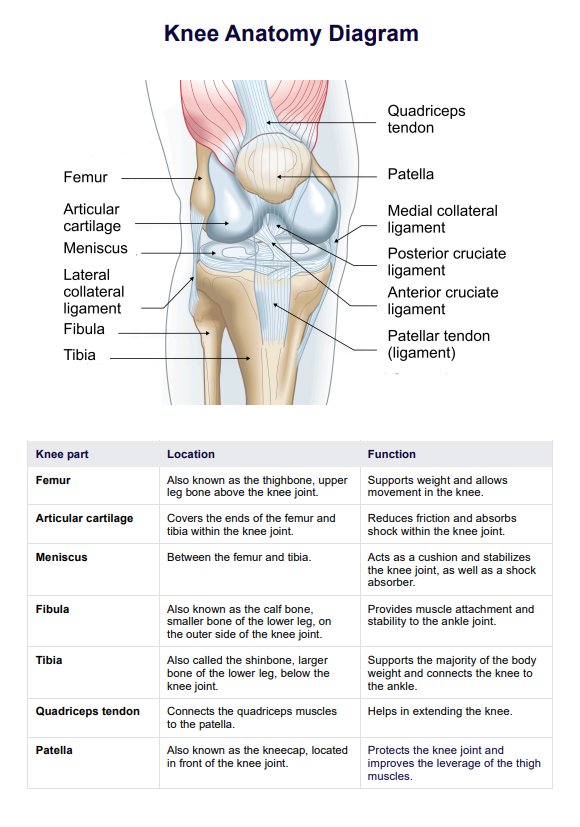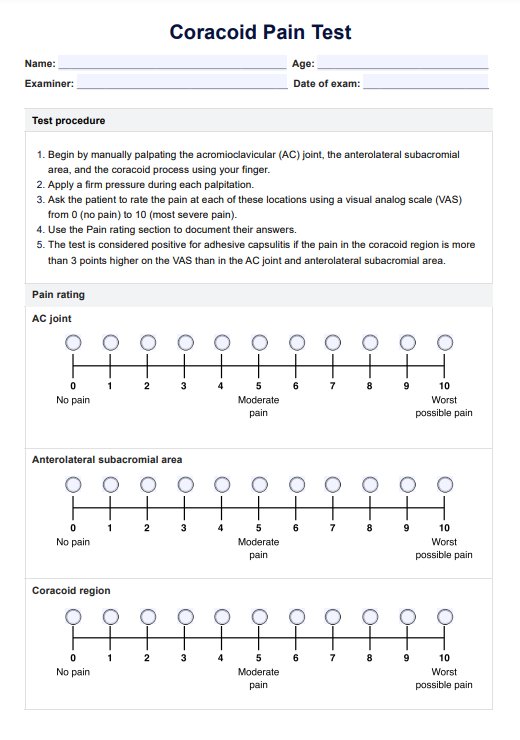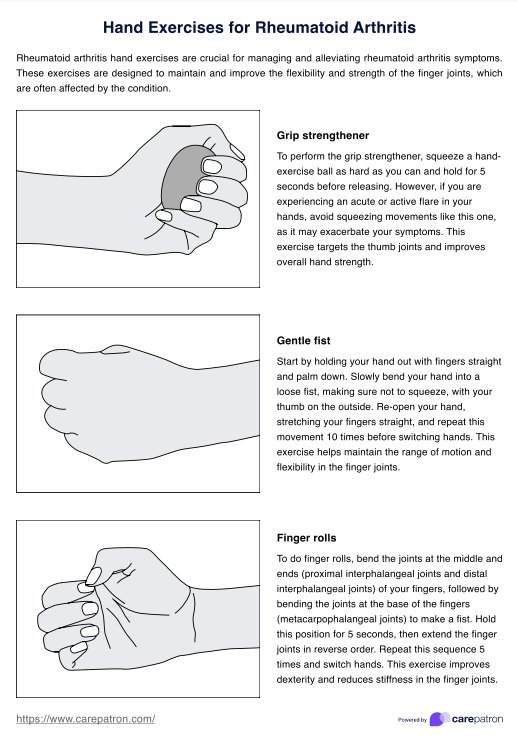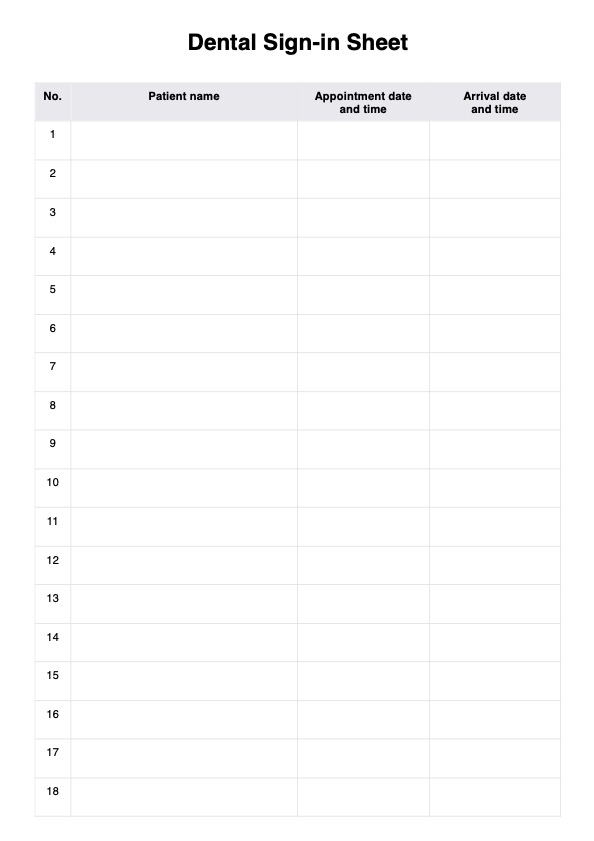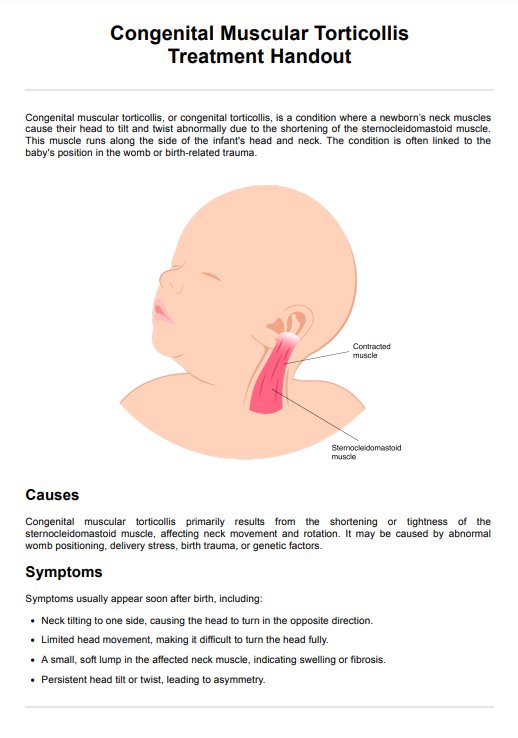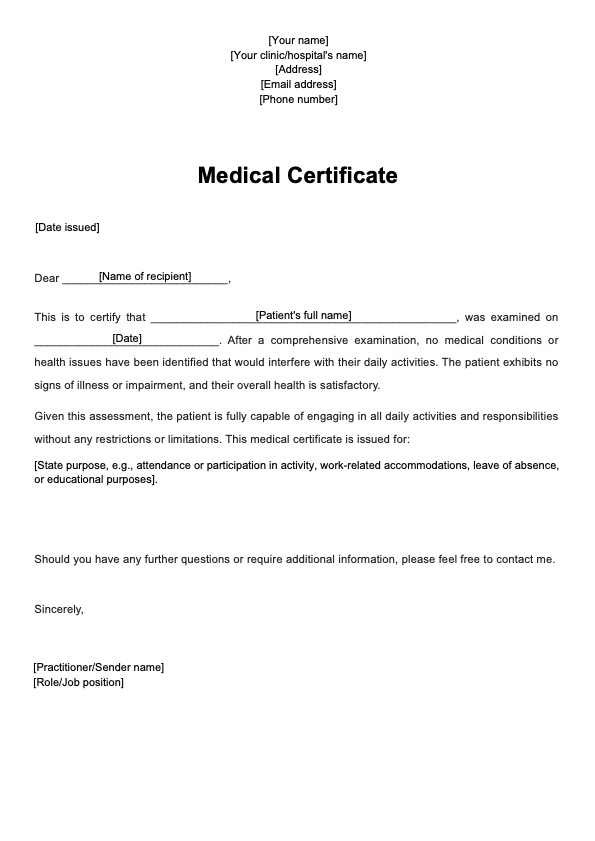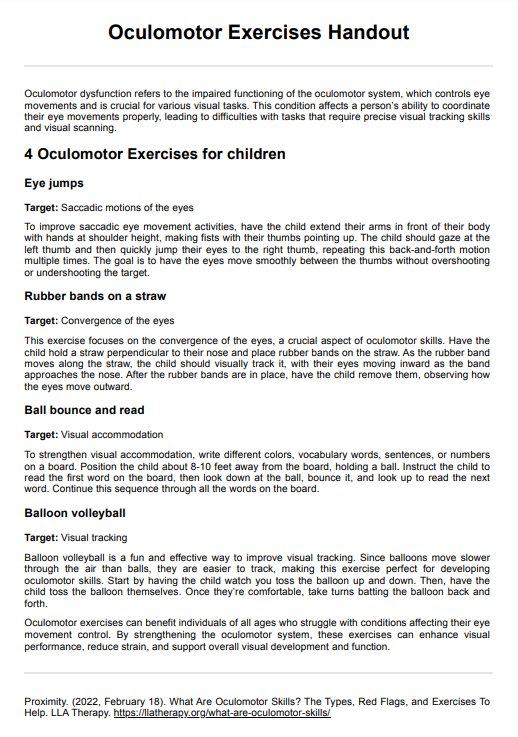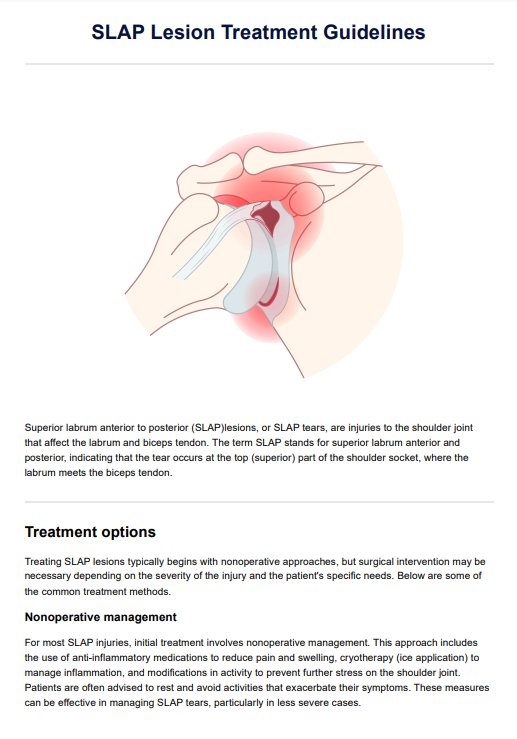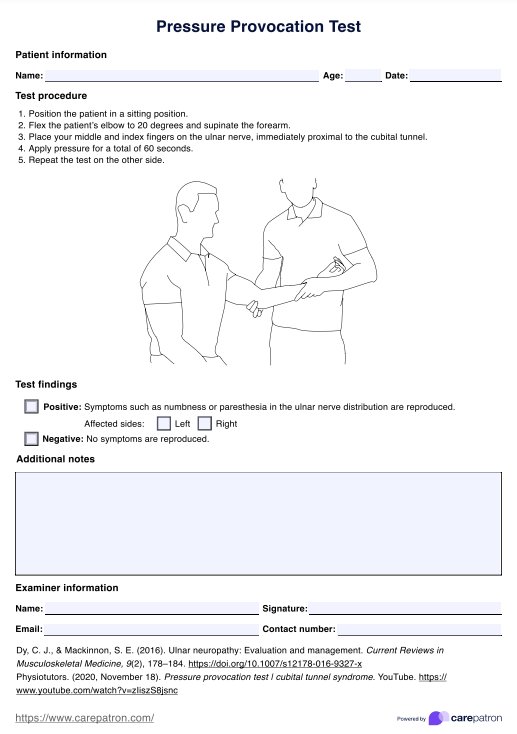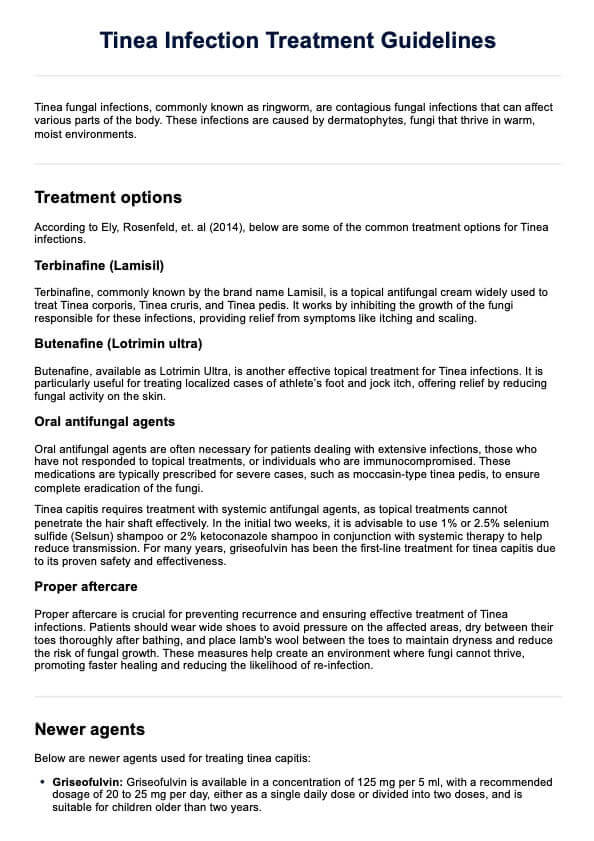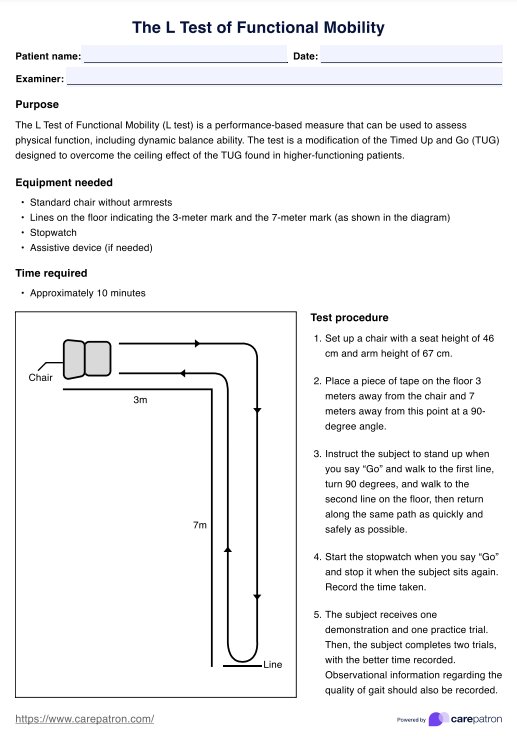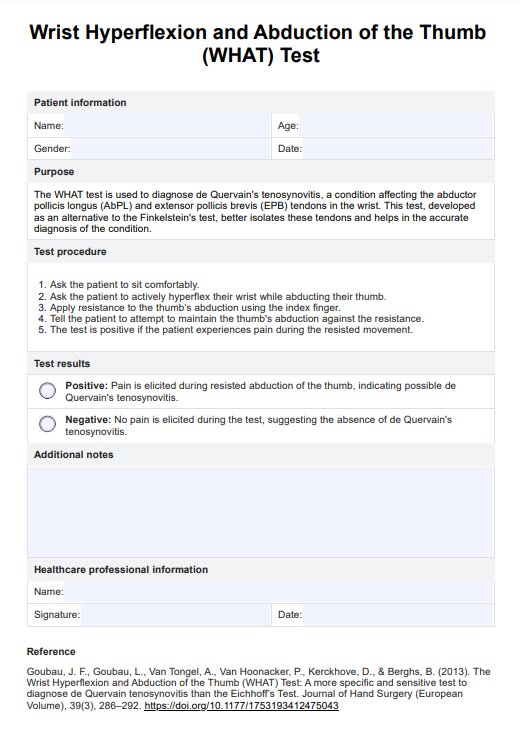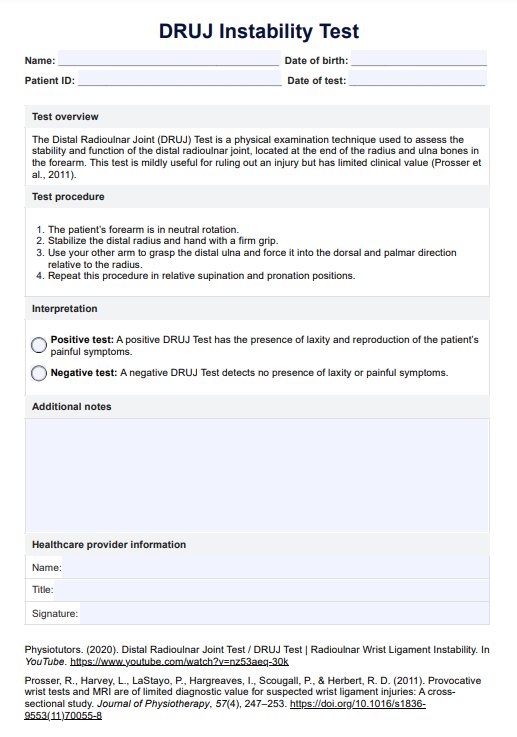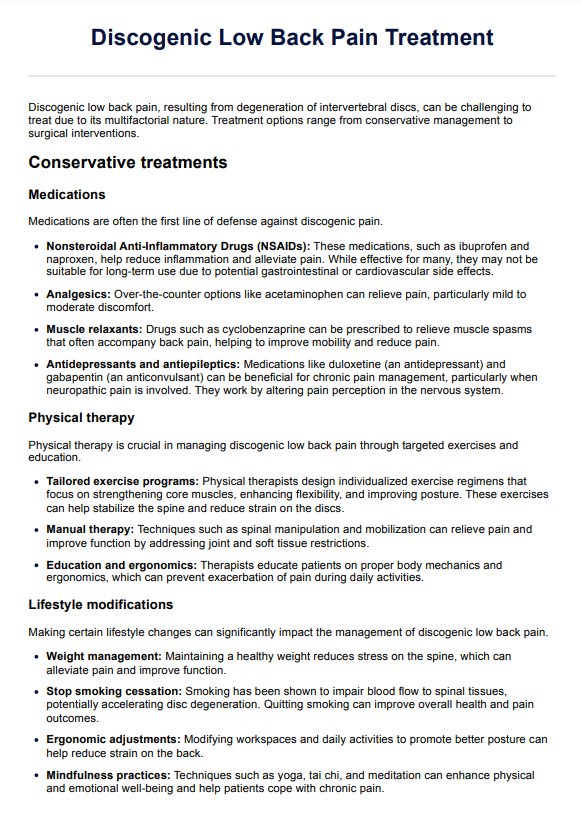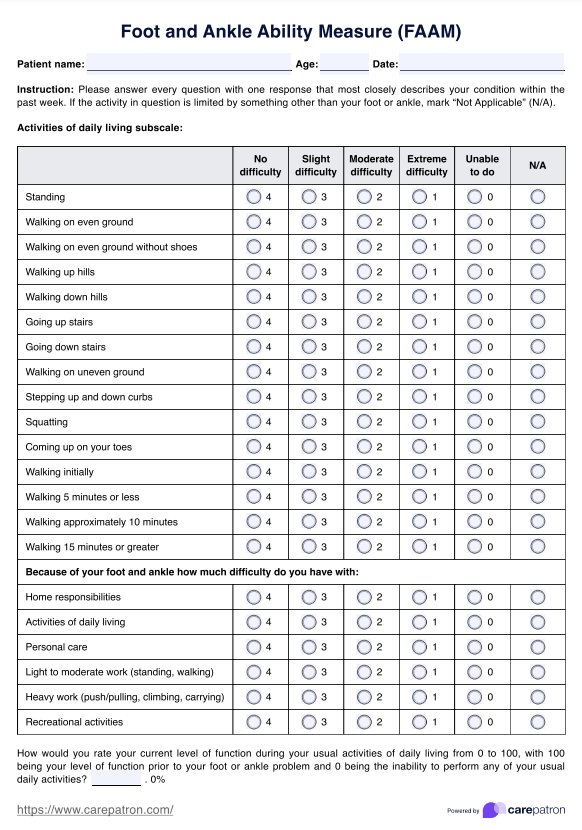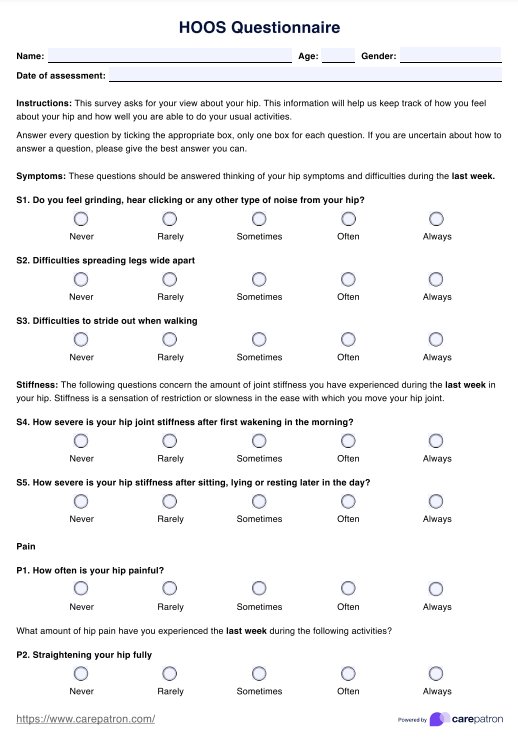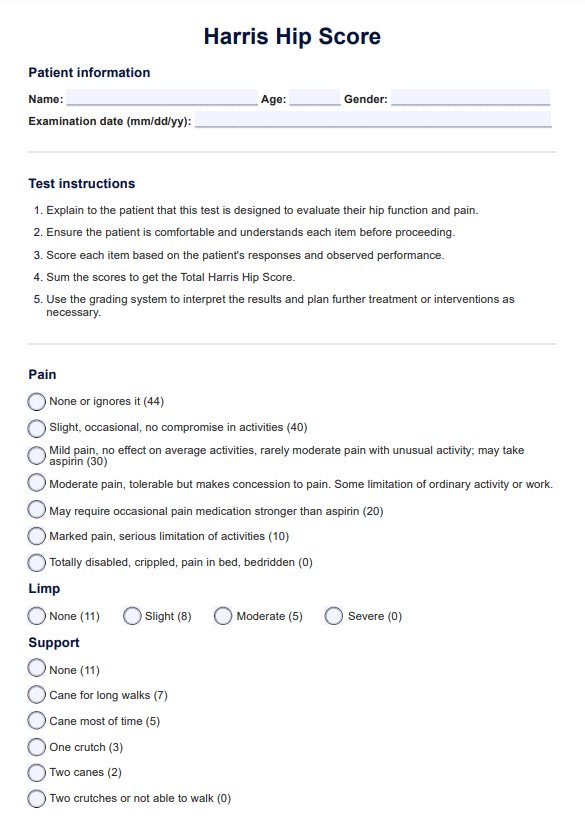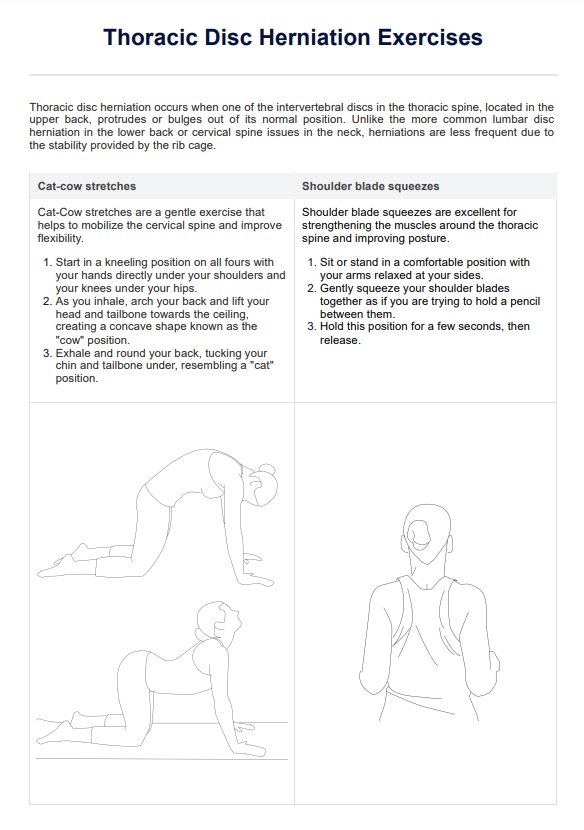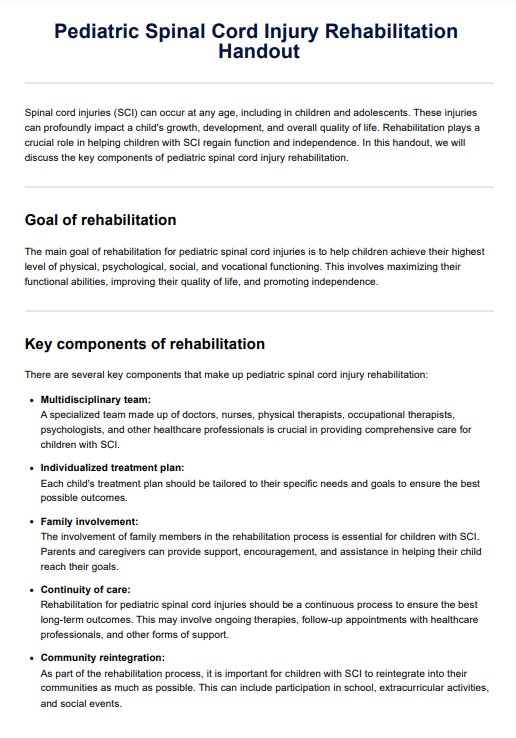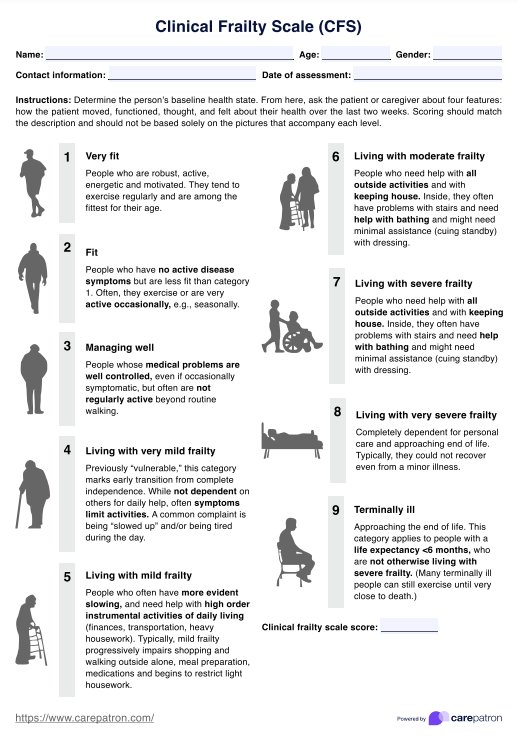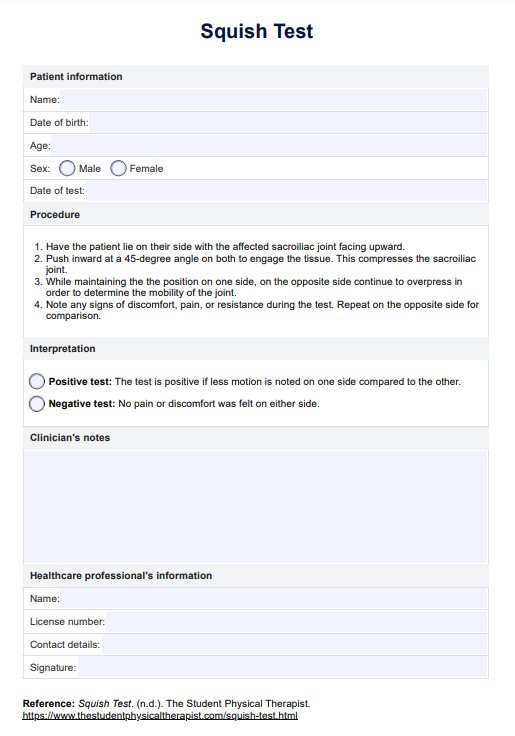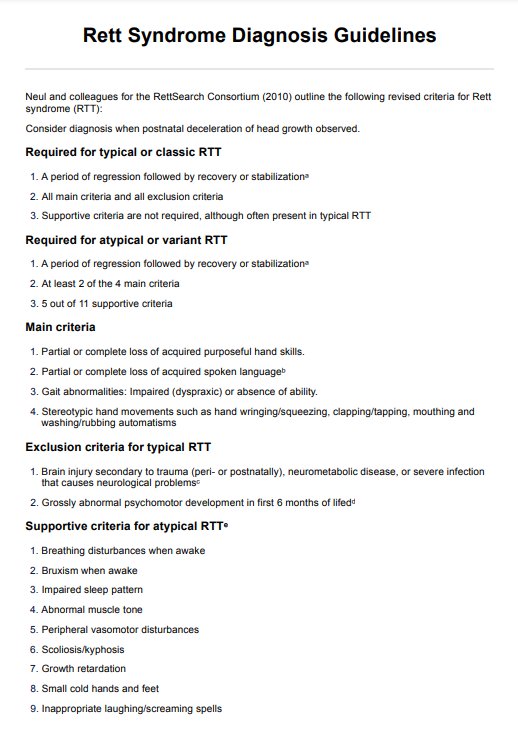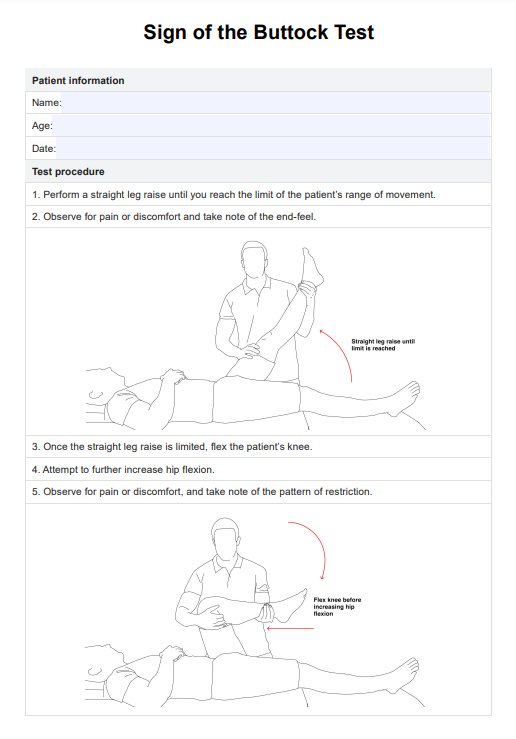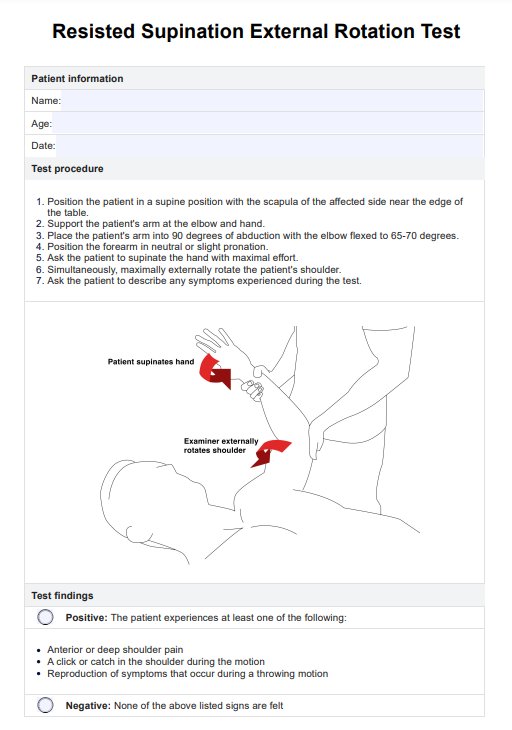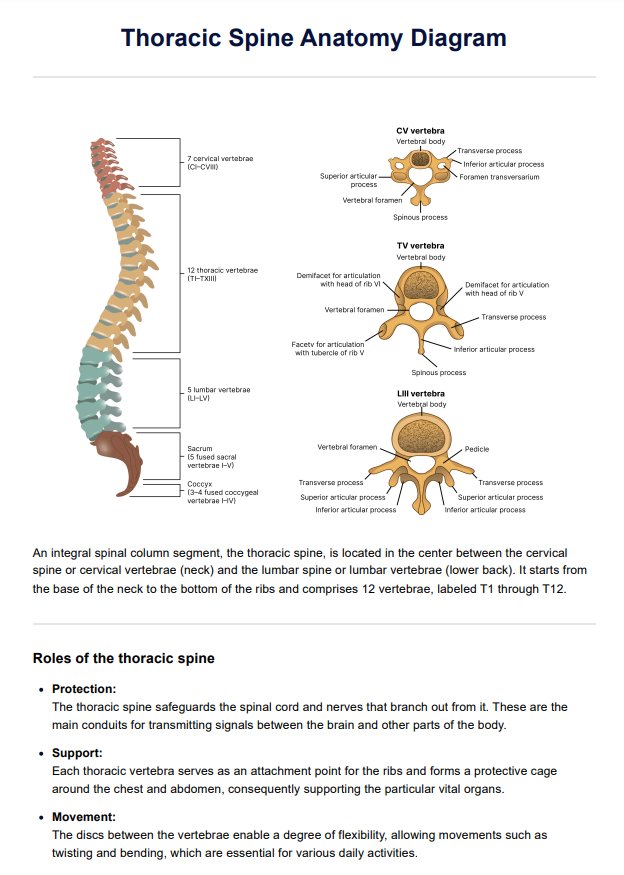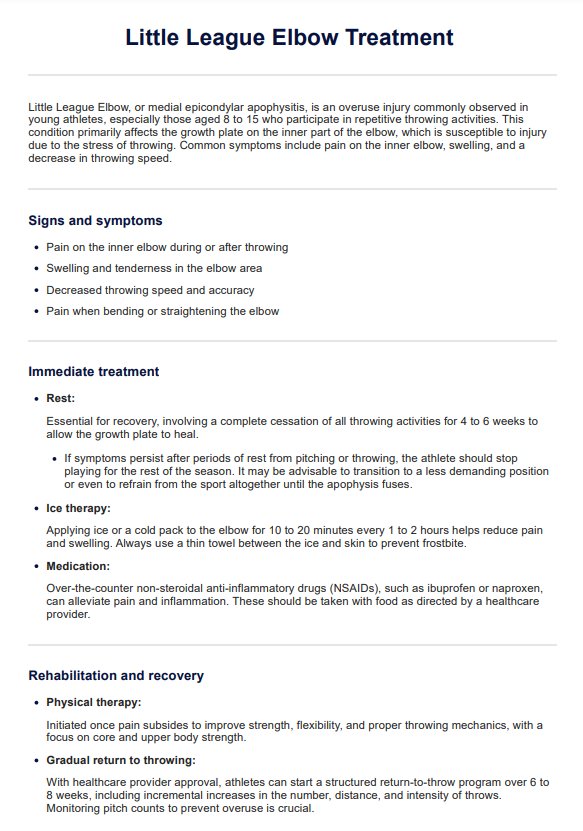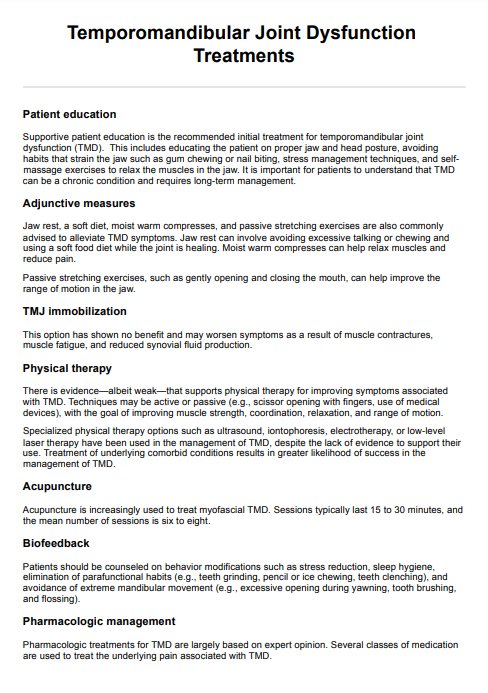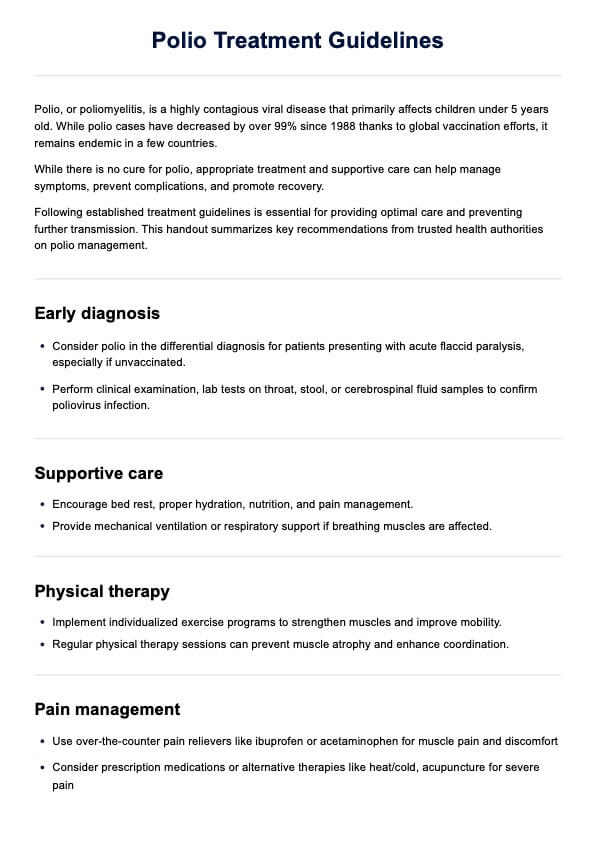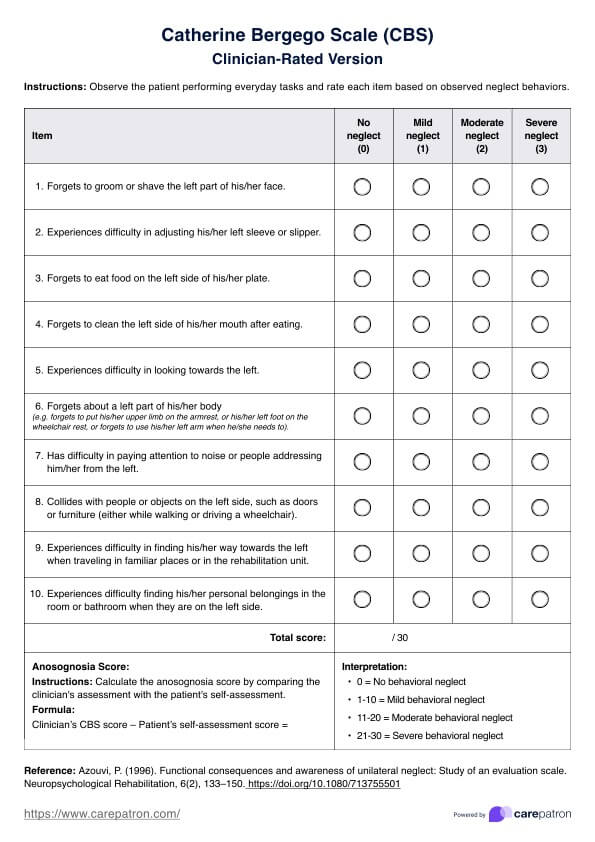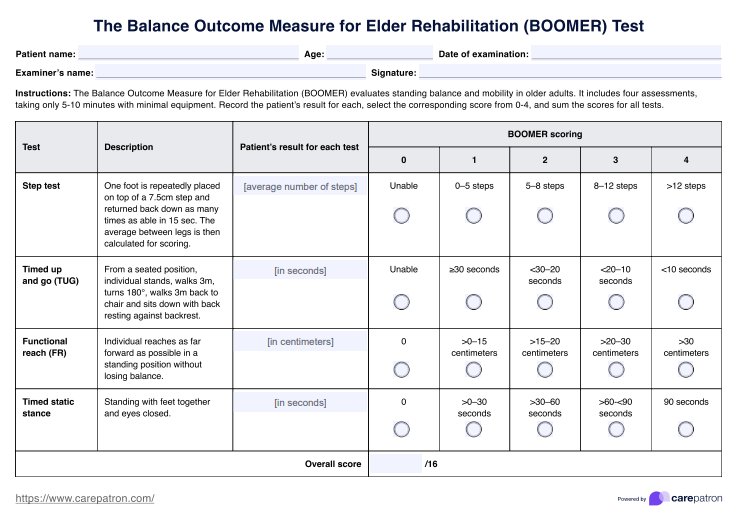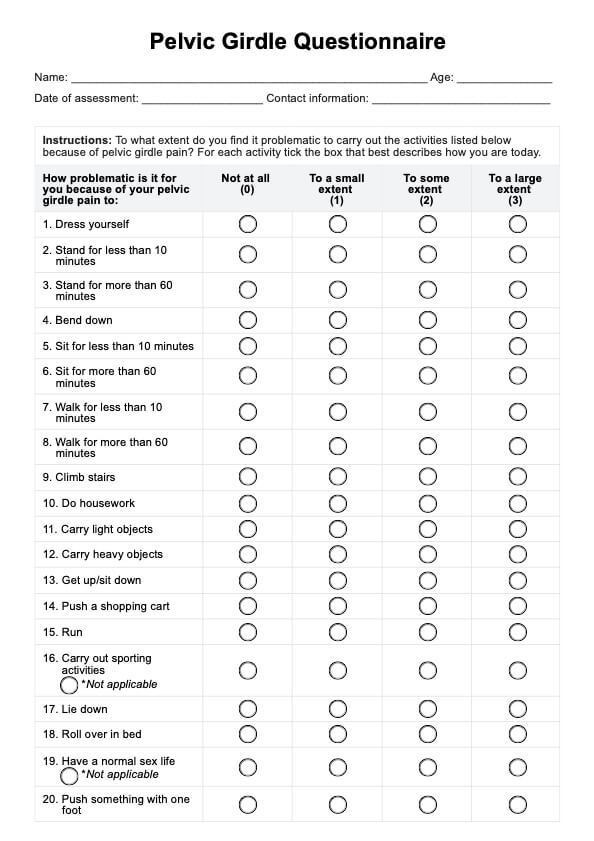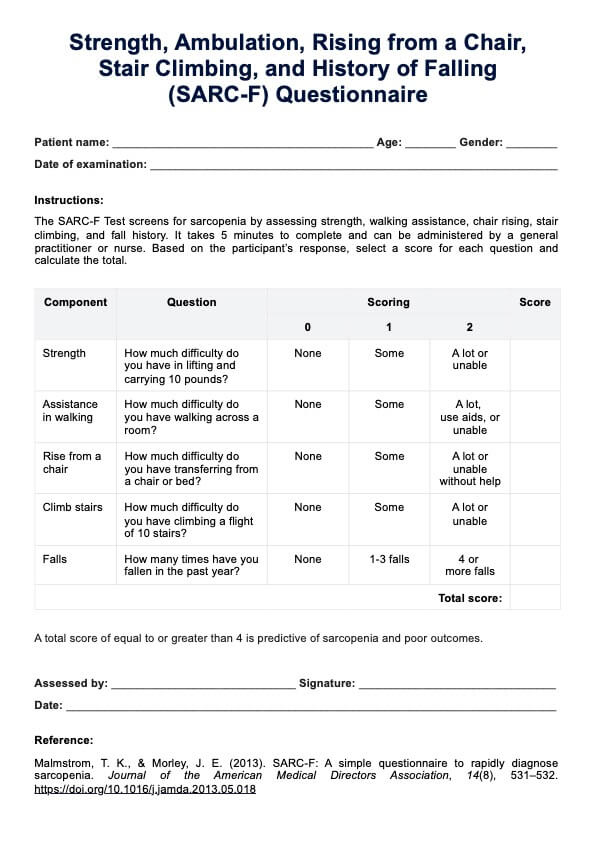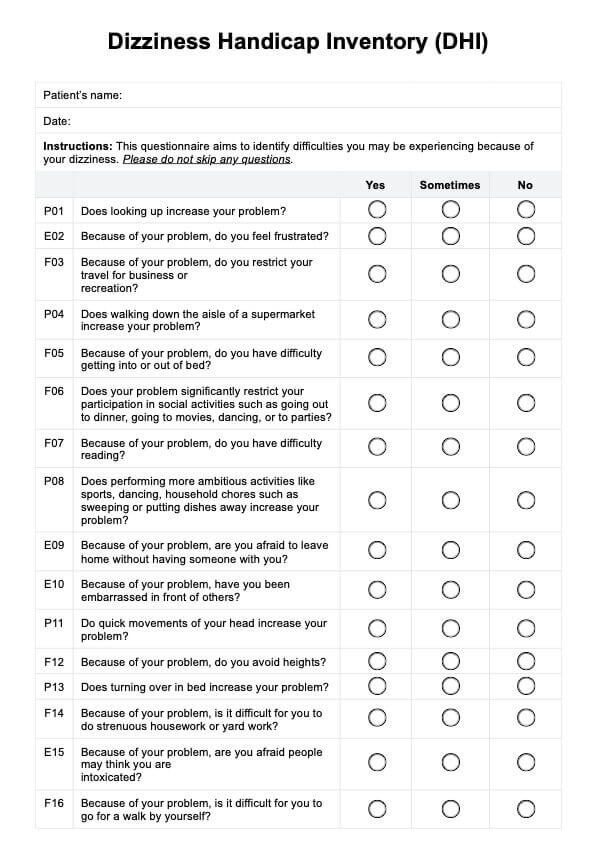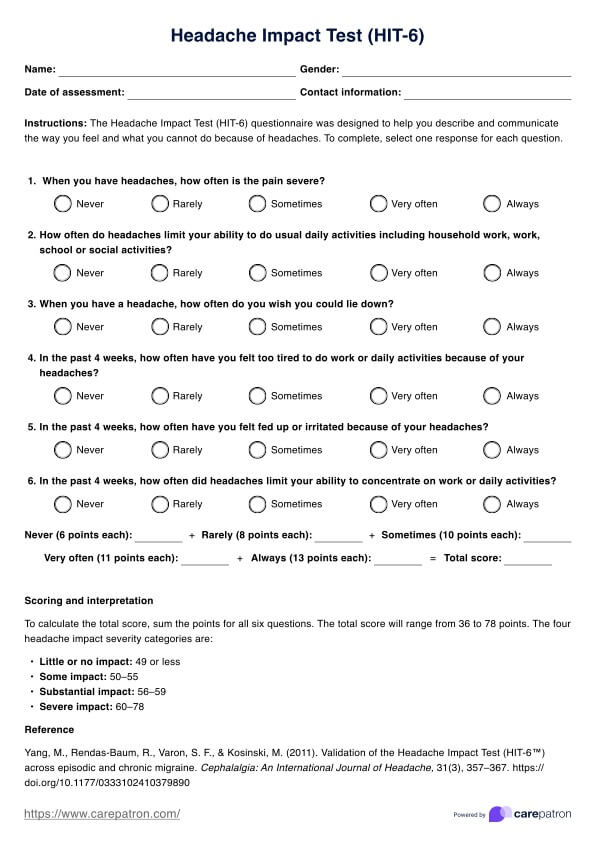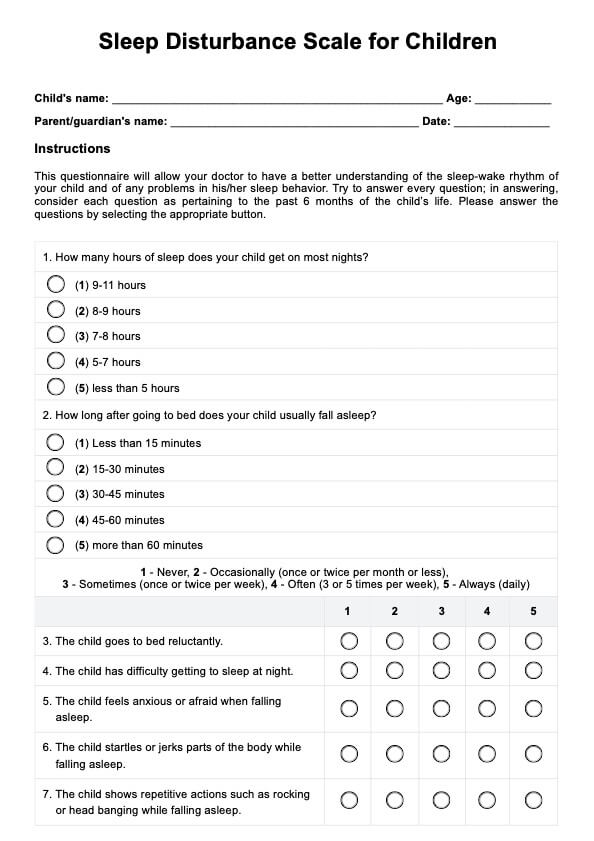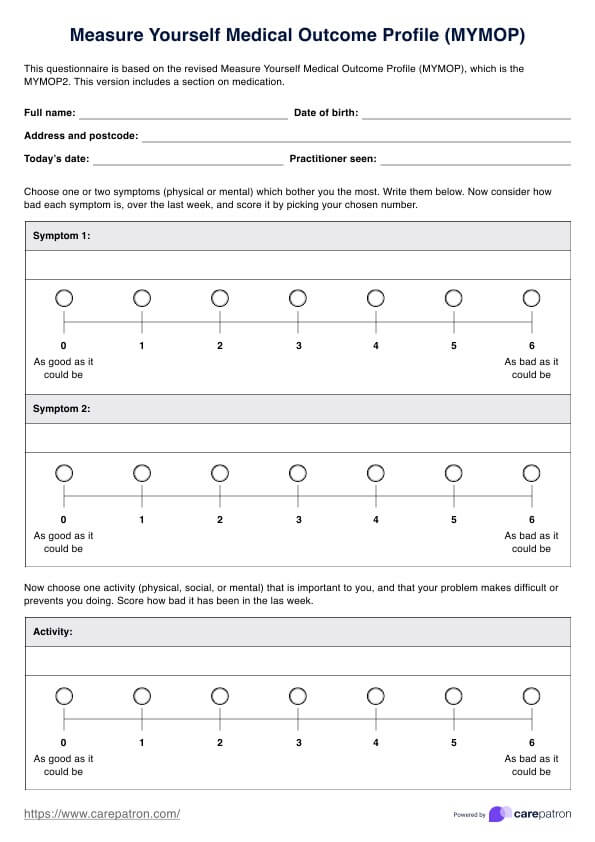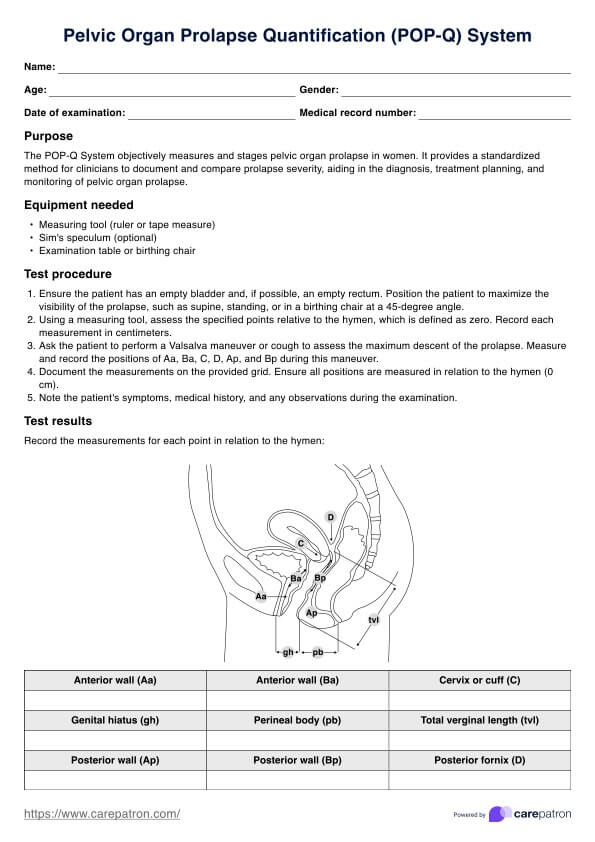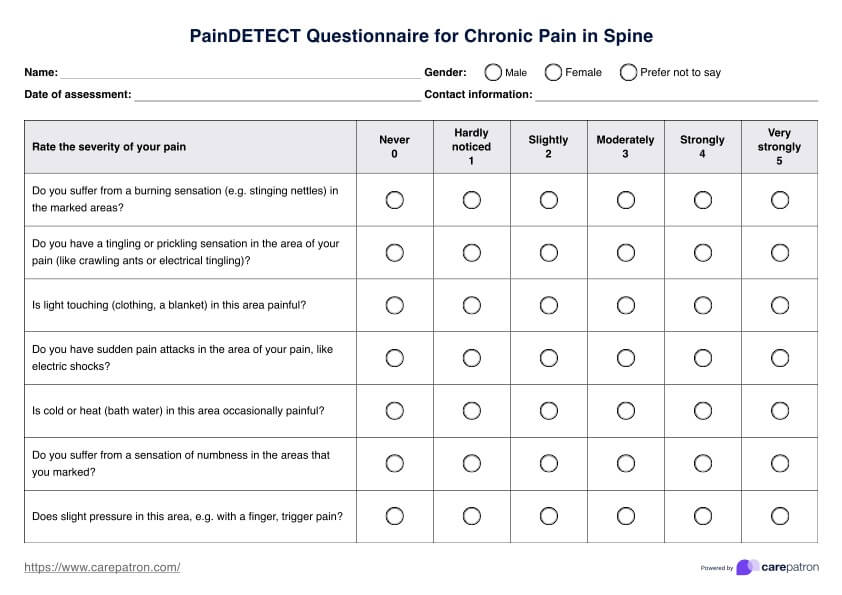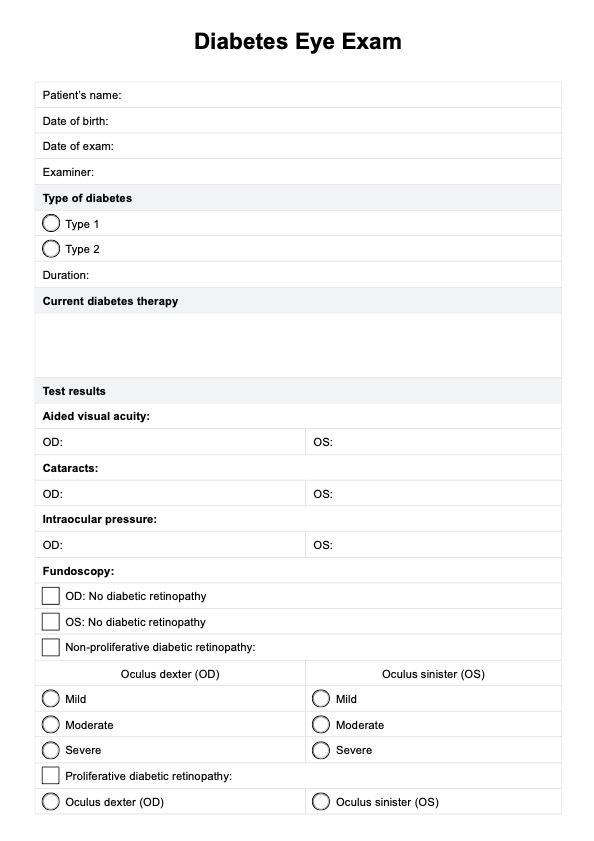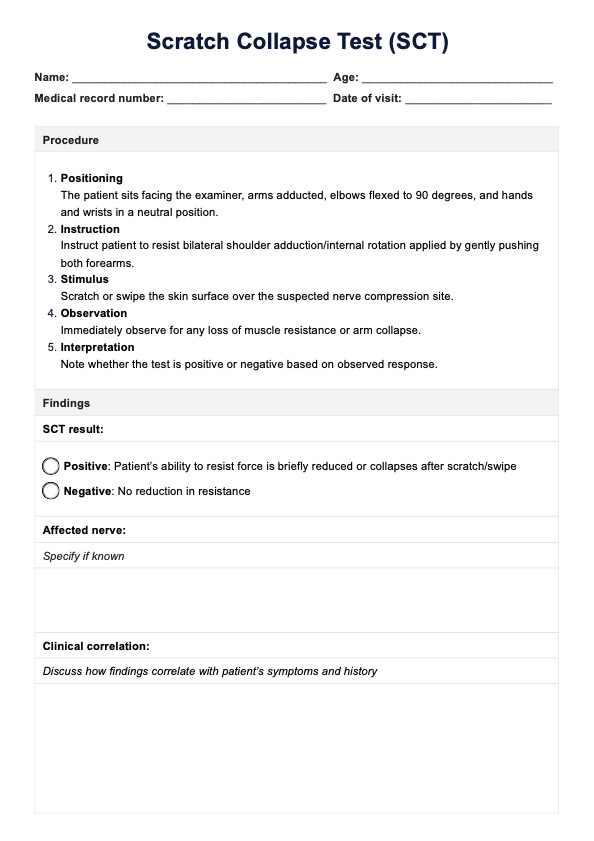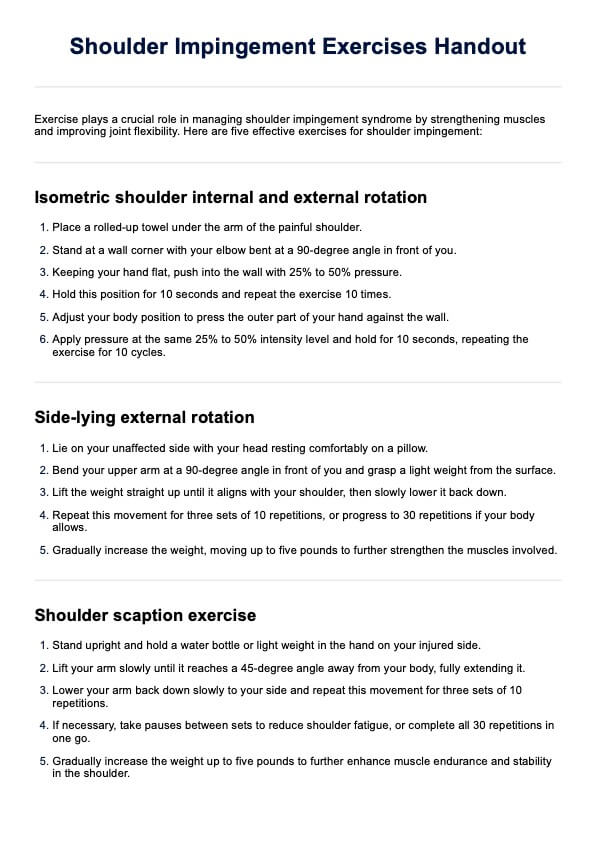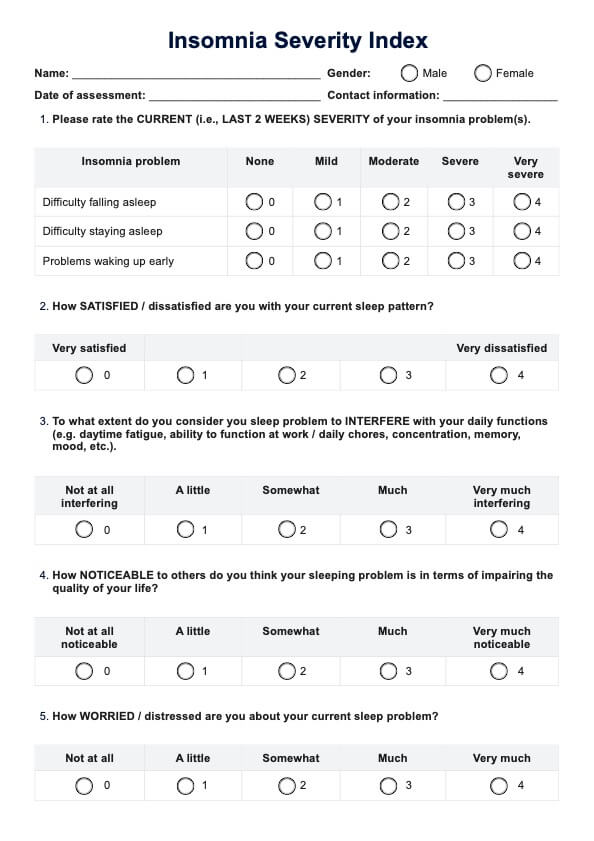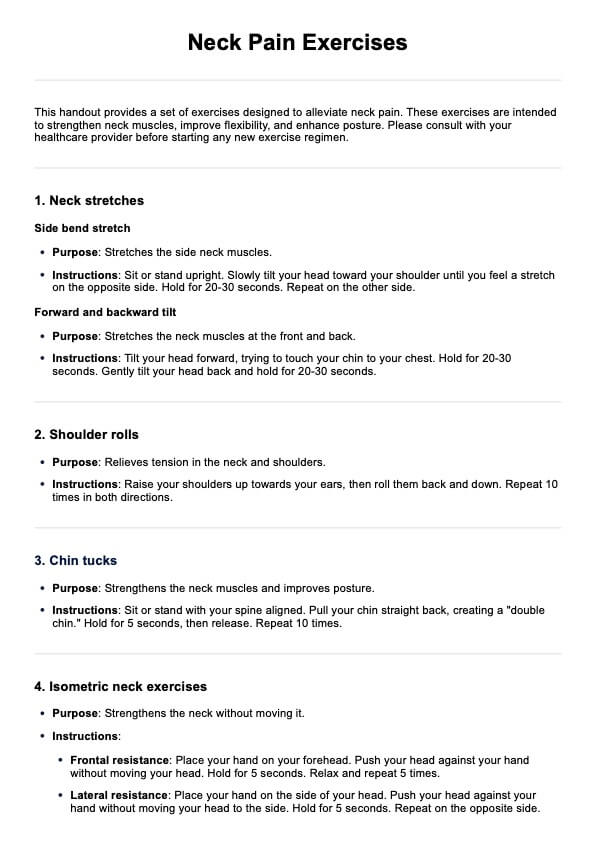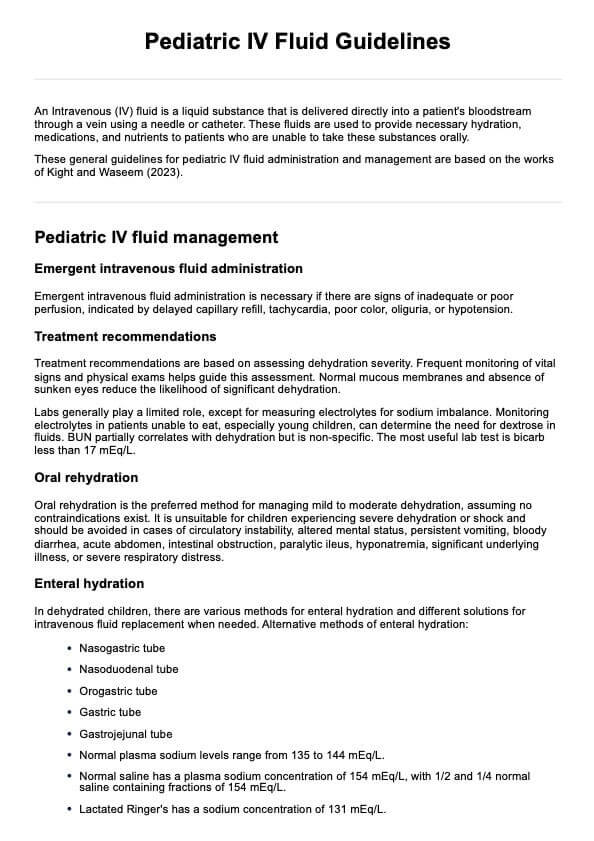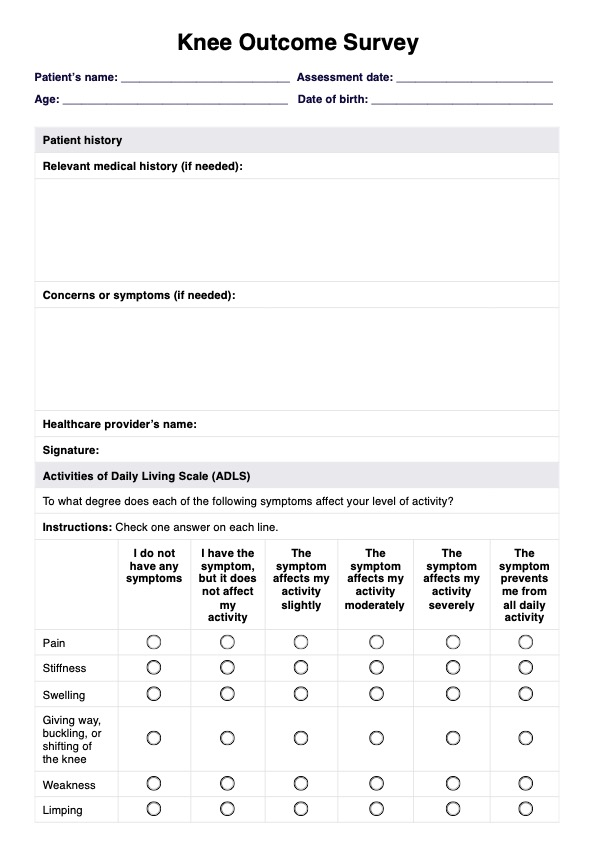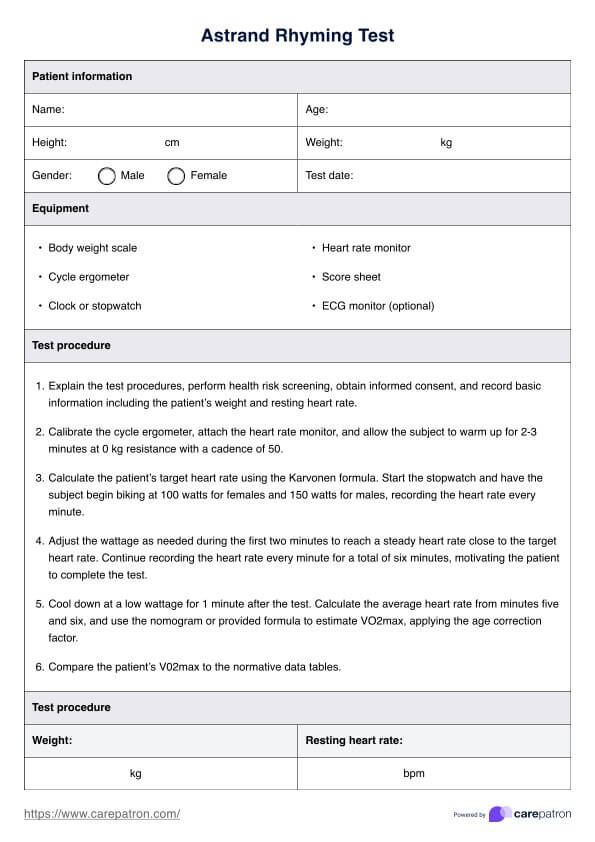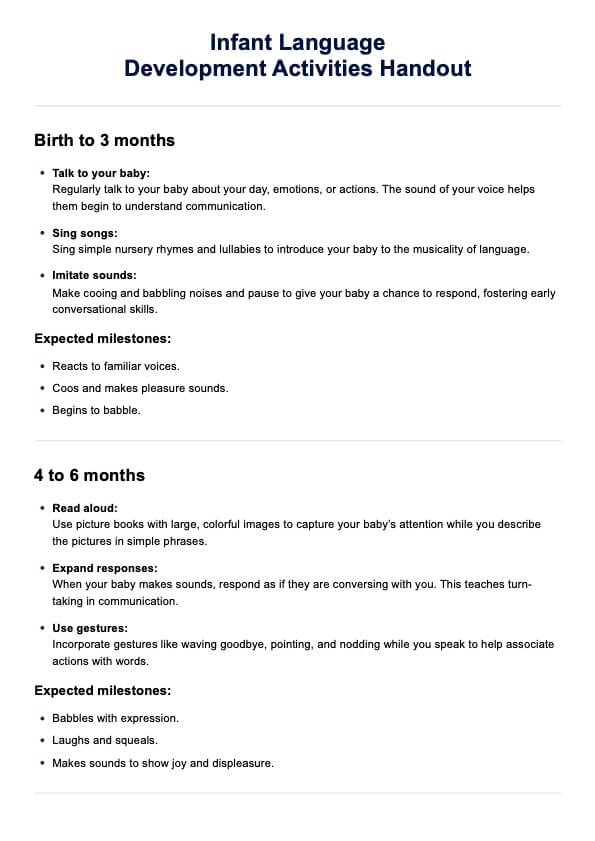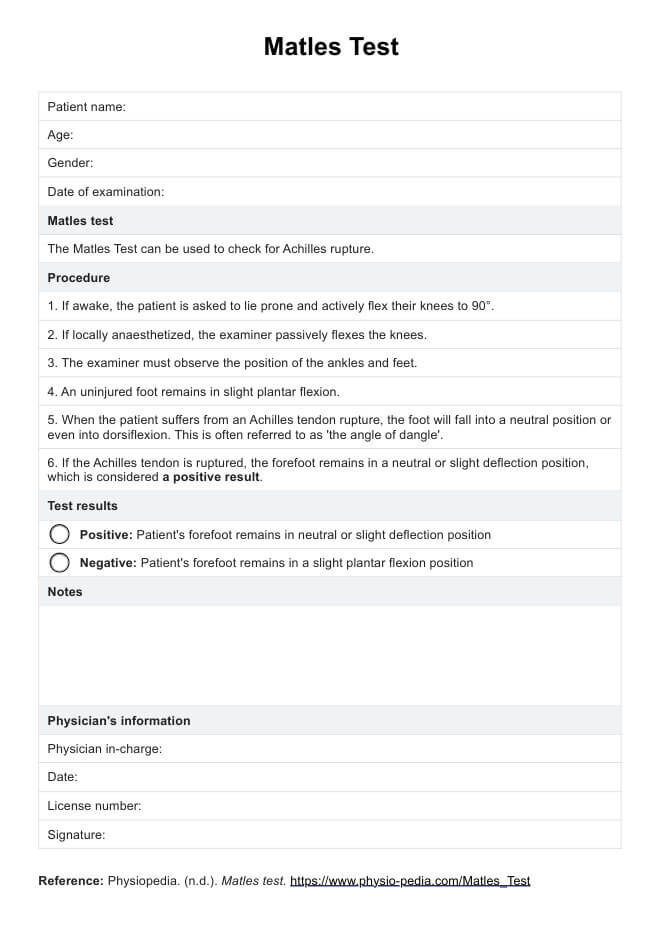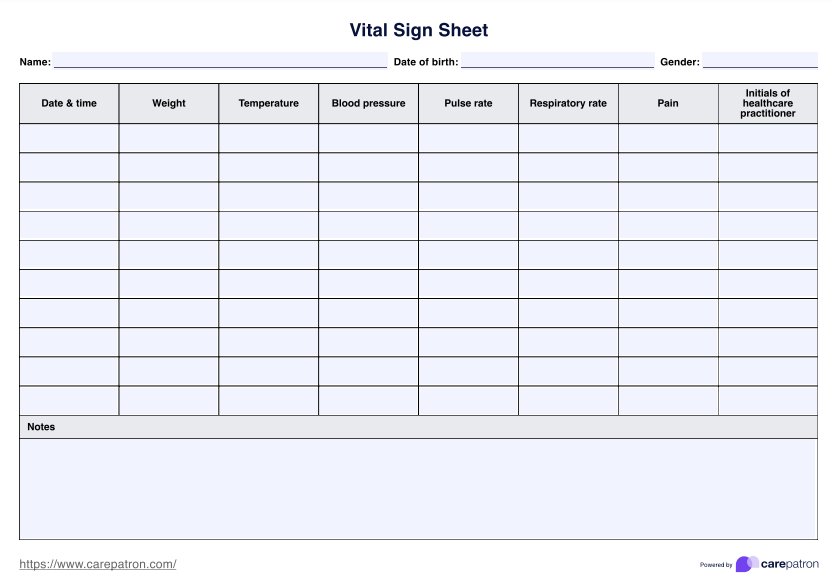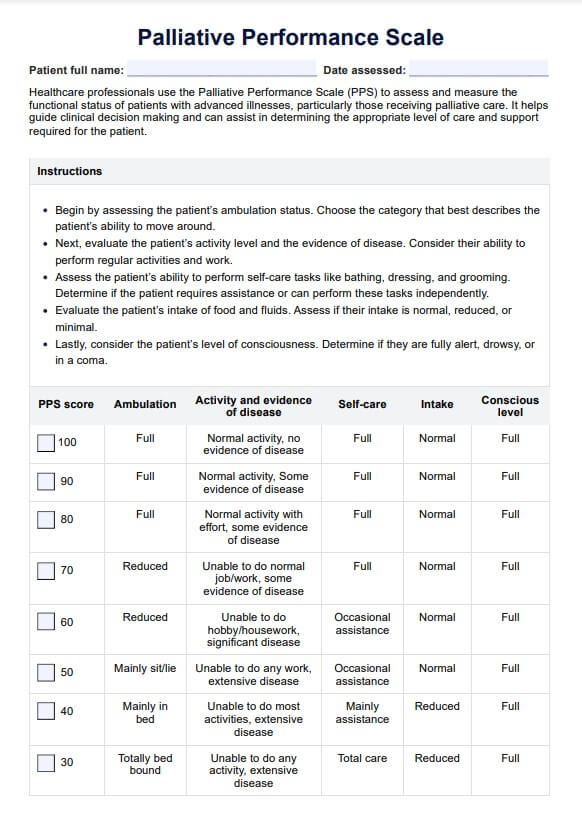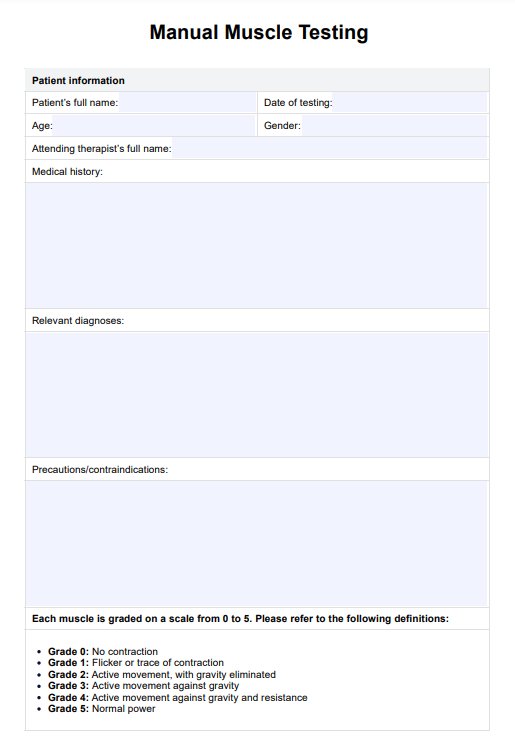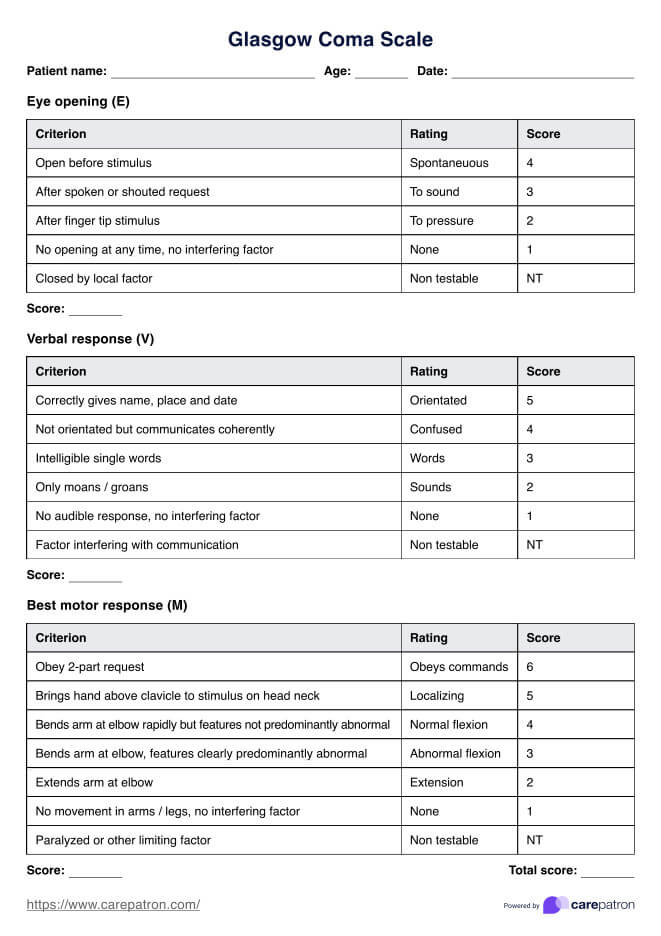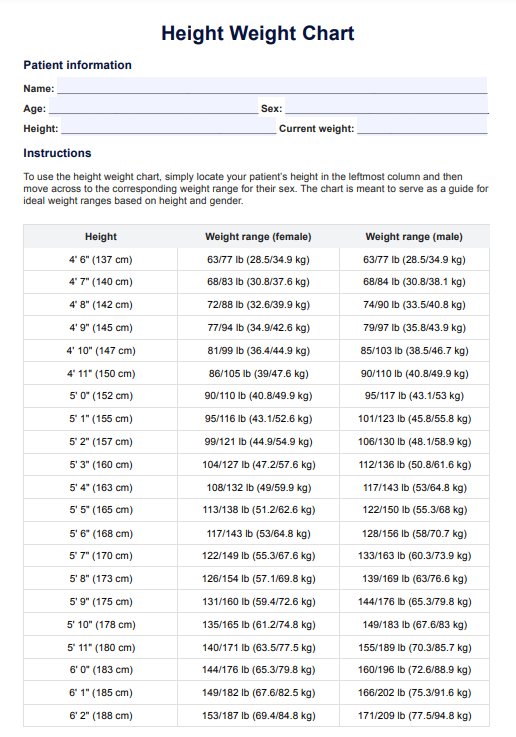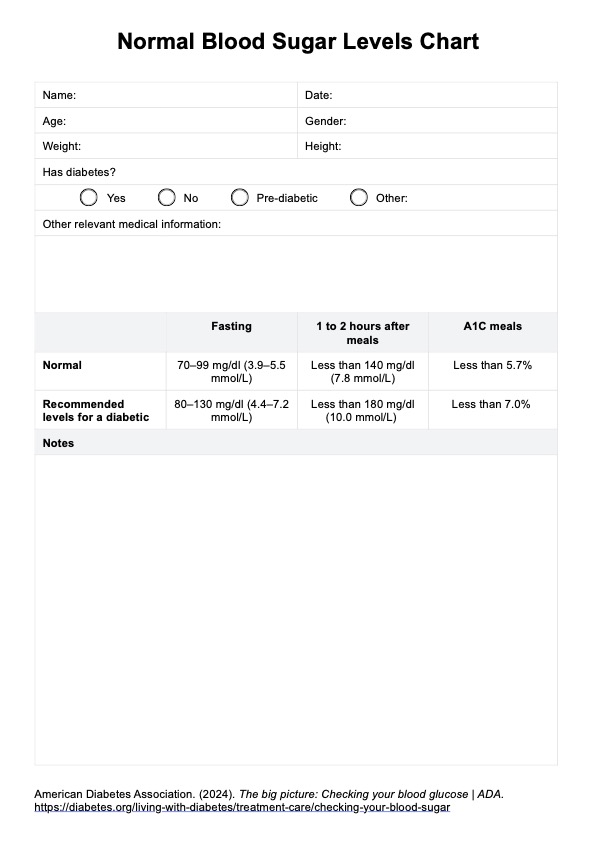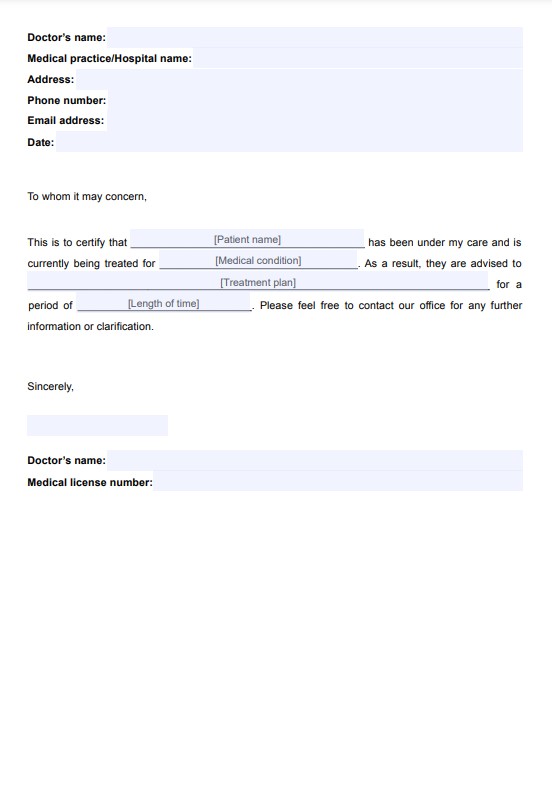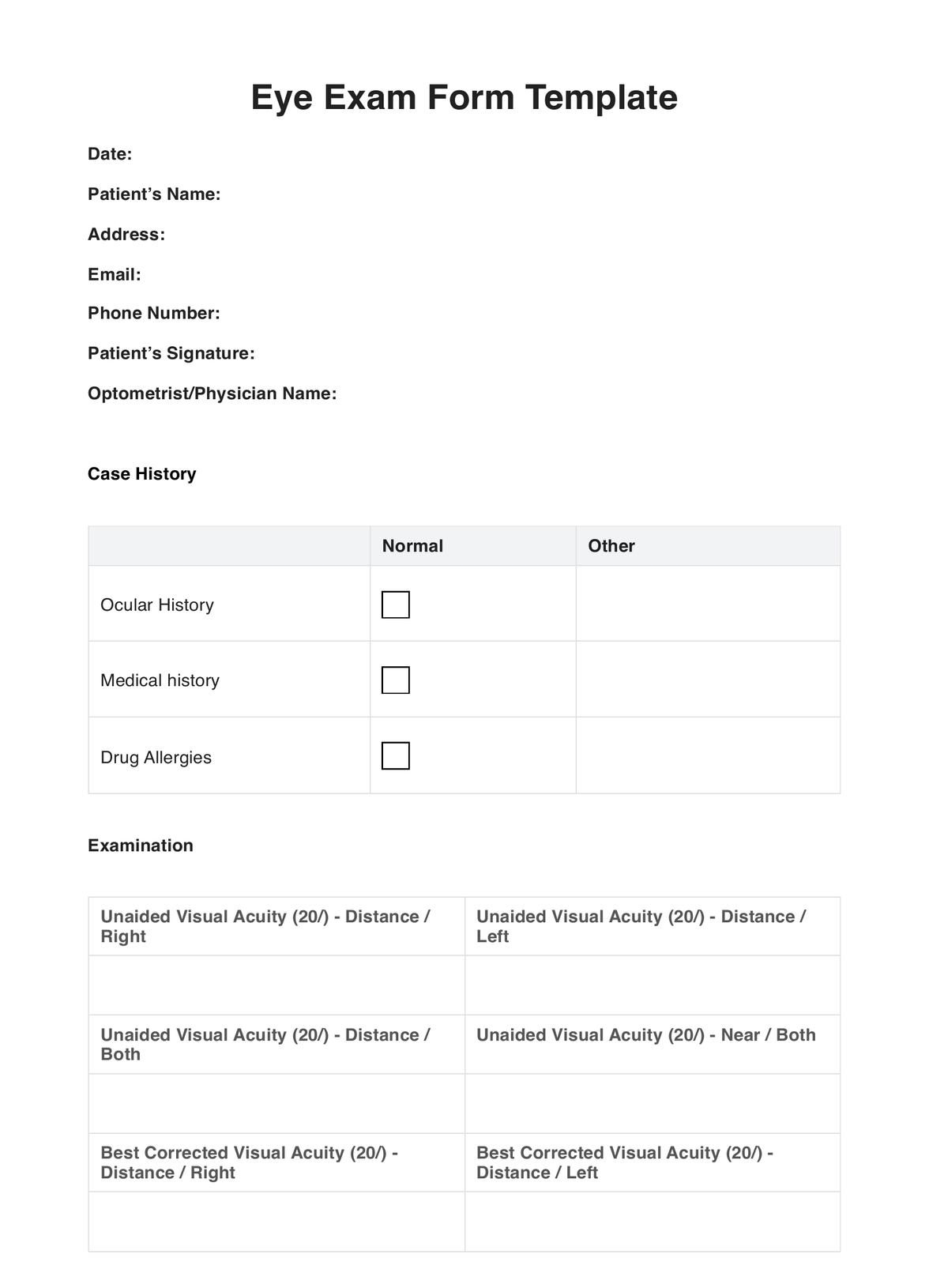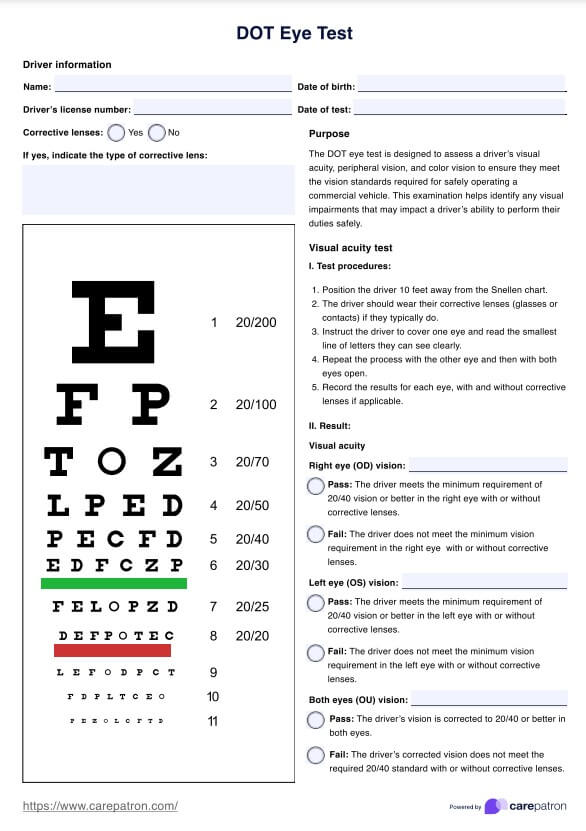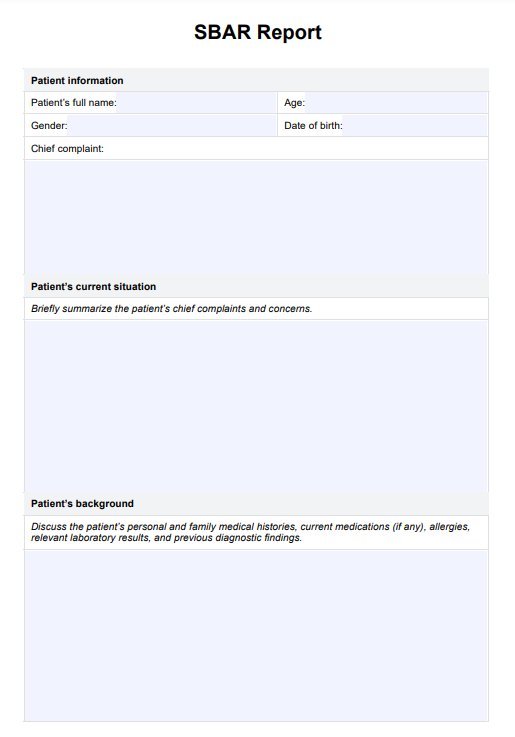Varus Stress Tests
Conduct and record test results for a Varus Stress Test with our comprehensive step-by-step PDF guide and template. Access this for free!


What is a Varus Stress Test?
The Varus Stress Test is a crucial component of orthopedic examinations used to evaluate the integrity of the lateral collateral ligament (LCL) in the knee and elbow. By applying a varus force to the joint, this test assesses ligament injuries, varus instability, and lateral joint line gapping, which are often associated with conditions like knee instability, excessive gapping, or a complete posterolateral corner injury. It is particularly useful in cases involving sports medicine, physical examinations, and preoperative evaluations.
Performed with the patient's knee, either flexed or extended, the test may help detect damage to structures such as the fibular collateral ligament, popliteus tendon, and popliteofibular ligament. Varus gapping and lateral compartment gapping are key indicators of injury, often accompanied by instability or pain on the lateral side of the knee. For elbow assessments, it helps assess the integrity of the lateral collateral ligament of the elbow. This test is commonly used to diagnose ligament injuries, such as sprains or tears, which can result from trauma or repetitive stress. By applying a varus force to the elbow while it's slightly flexed, the test evaluates the stability of the joint.
The Varus Stress Test is frequently used alongside the Valgus Stress Test to provide a comprehensive evaluation of lateral and medial collateral ligament structures. Stress radiographs or arthroscopy may complement the physical examination for increased diagnostic accuracy.
Varus Stress Tests Template
Varus Stress Tests Example
How does our Varus Stress Test template work?
The Varus Stress Test plays a vital role in identifying ligament damage, monitoring rehabilitation progress, and planning treatment strategies for athletes and patients. Here's how you can incorporate this template into your practice:
Step 1: Get the Varus Stress Test template
Get a copy of the template by clicking the "Use Template" button to open a fillable version in the Carepatron app. You can also click "Download" for a ready-to-print version that you can fill out digitally or by hand. In this guide, we've also provided a sample for your reference.
Step 2: Explain how the test works to your patient
Take a moment to explain the purpose and procedure of the test to your patient, ensuring they understand what to expect during the examination. Before beginning, confirm all necessary patient information is accurately recorded.
Step 3: Perform the test
The template outlines both step-by-step procedures for either elbow or knee Varus Stress Test. Here's an overview of how each test is performed:
- Knee: The patient lies in a supine position, with the knee flexed to 30°. One hand is used to stabilize the femur, while the other applies slight lateral rotation to the lower leg. Passive adduction is then performed at the knee joint to stress the lateral collateral ligament.
- Elbow: Instruct the patient to stand and position the elbow in slight flexion while palpating the humeroulnar joint line. Apply a varus force to the elbow. The test is usually done with the elbow flexed between 5 and 30 degrees, but it can be repeated at various angles.
Step 4: Document results and additional information
Our template provides a dedicated section to clearly document the results as either positive or negative, allowing for easy categorization. Additionally, there is space to include any relevant observations or supplementary details that may assist in interpreting the results, such as patient response, test conditions, or any other findings. This ensures comprehensive and accurate record-keeping for future reference.
When would you use this form?
The Varus Stress Test is a fundamental diagnostic tool that finds applications in diverse medical scenarios. Moreover, it forms an essential part of the comprehensive evaluation process of the musculoskeletal system. Five scenarios when it's appropriate to use this resource:
Suspected ligament injury
If acute trauma has occurred to the knee or elbow, the Varus Stress Test aids in evaluating potential ligament damage quickly. It helps determine the severity of the injury and guides immediate treatment or further diagnostic steps.
Chronic pain assessment
For patients experiencing chronic joint pain or instability, the test helps pinpoint whether ligament issues are contributing to their symptoms. It provides valuable insights for creating a targeted treatment plan.
Preoperative evaluation
The Varus Stress Test is crucial for assessing ligament conditions before surgery. It offers detailed information to guide the surgical approach, and surgeons rely on these findings to plan for optimal joint stability post-operation.
Rehabilitation monitoring
During recovery, therapists use the test to measure progress in ligament healing and joint stability. It helps adjust rehabilitation programs to meet the patient’s evolving needs.
Athlete screening
The test is a valuable tool for identifying ligament weaknesses in athletes, potentially preventing injuries through early detection. This proactive approach supports the design of strengthening or preventive measures to enhance performance and safety.
Benefits of using our Varus Stress Test template
Our Varus Stress Test template is more than just a documentation tool. It’s a practical guide for conducting both knee and elbow varus stress tests. Here are the benefits it can give you:
Saves time
Designed to save time and enhance accuracy for physical therapists like you, the template is available in digital and print formats, with sections to indicate positive or negative results and space for important observations.
Quick and precise assessments
The template streamlines the process of diagnosing ligament injuries, providing clear steps to ensure all critical aspects of the test are covered. This enables fast and accurate evaluations, helping you deliver timely care and reducing the risk of complications.
Improved treatment planning and early intervention
With a section for documenting results and observations, the template helps guide the creation of tailored treatment plans. It also supports early detection of ligament vulnerabilities, allowing you to take proactive measures to prevent severe injuries and optimize patient outcomes.
Commonly asked questions
The cruciate ligament works with other knee structures to stabilize the joint. If the test shows instability, it might suggest combined ligament injuries, including possible cruciate ligament involvement.
The external rotation recurvatum test is primarily used to diagnose posterolateral corner injuries, which can be difficult to identify. This test involves assessing the knee's ability to tolerate external rotation and hyperextension. In contrast, the Varus Stress Test specifically evaluates the integrity of the lateral collateral ligament by applying a specific inward force or knee flexion to the knee joint and observing for any abnormal movement or pain indicating ligament injury. It's part of the broader valgus and varus stress tests, offering a comprehensive evaluation of joint health.
Varus laxity refers to the looseness or instability of the knee or elbow on the outer side (lateral side). It occurs when the LCL in the knee or elbow is damaged or weakened, causing excessive movement or abnormal shifting of the joint during stress tests.


